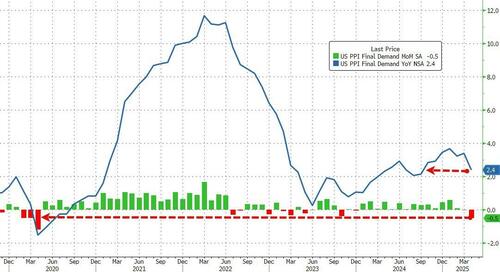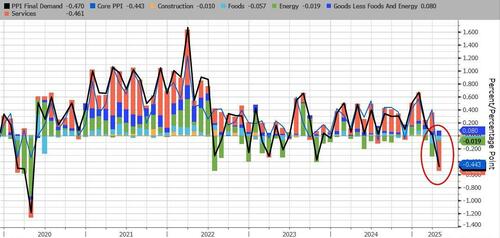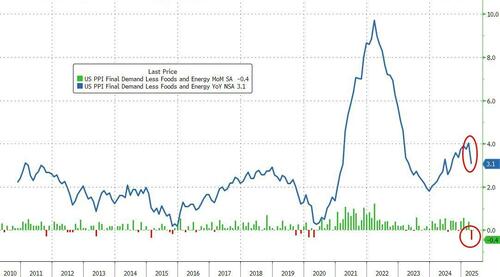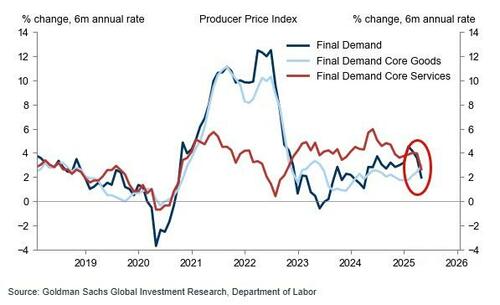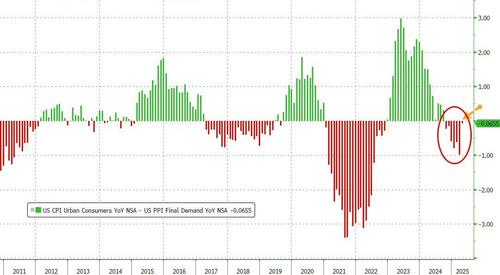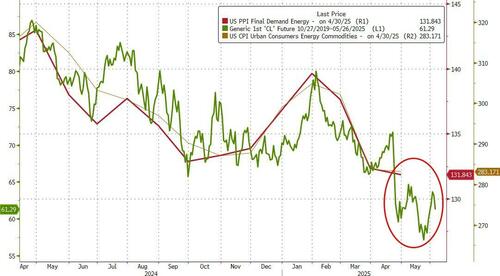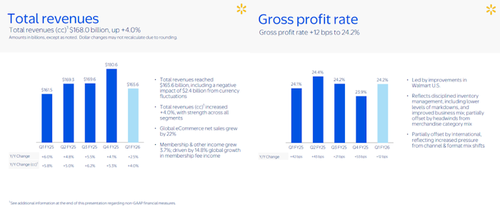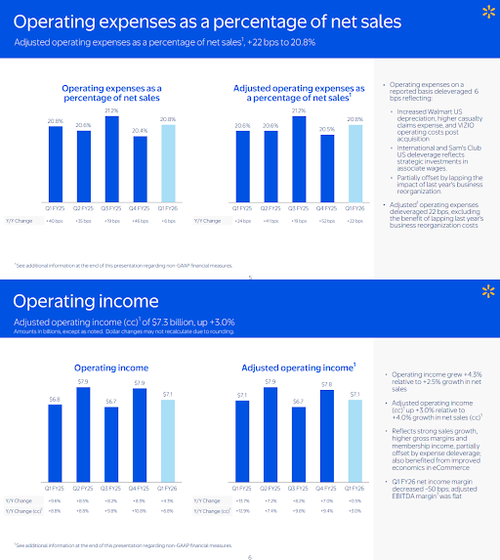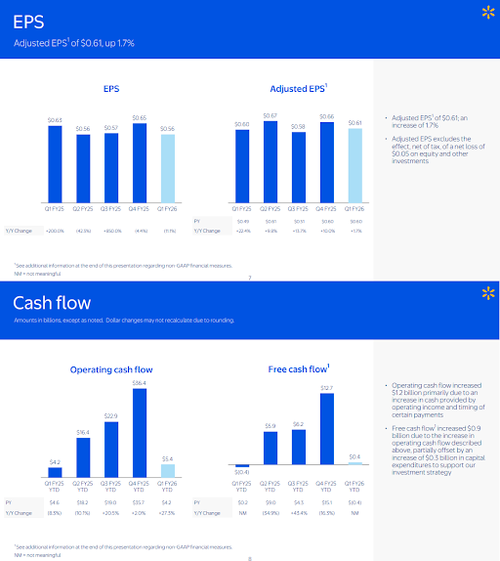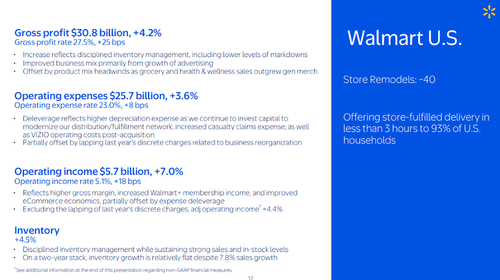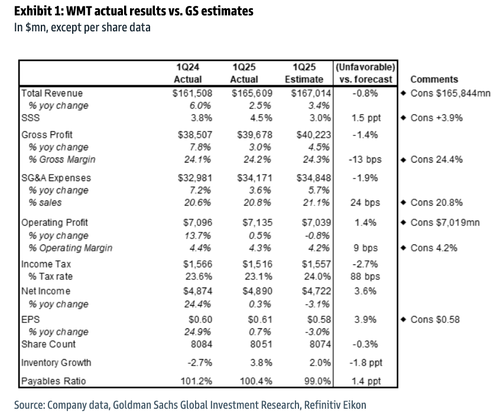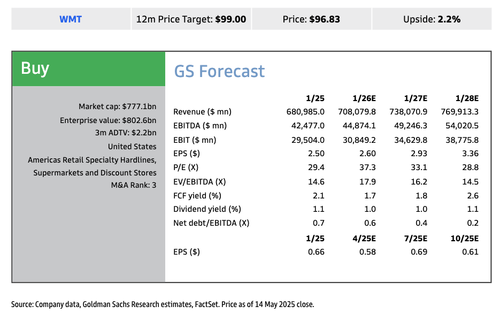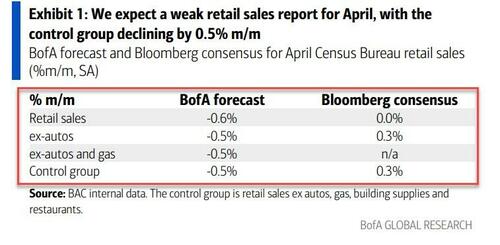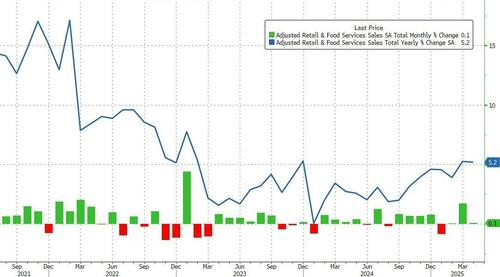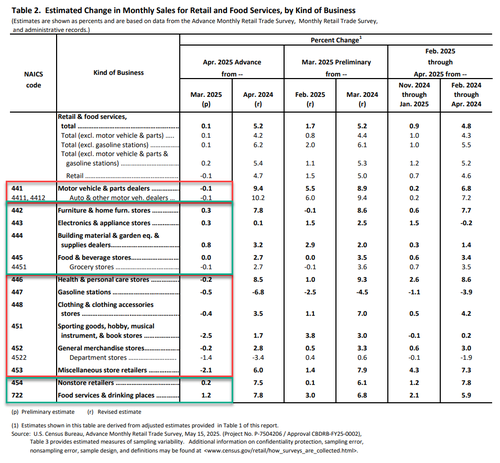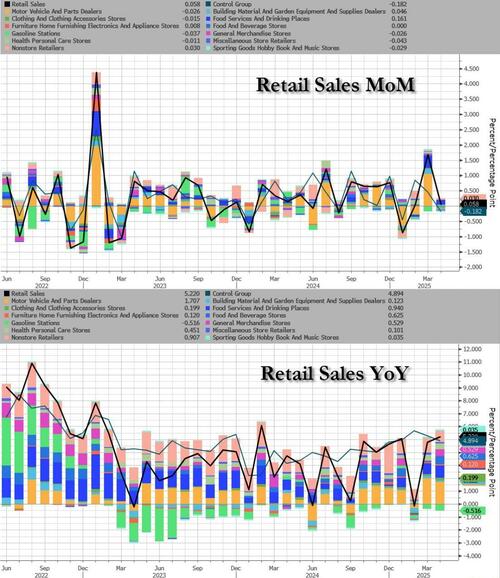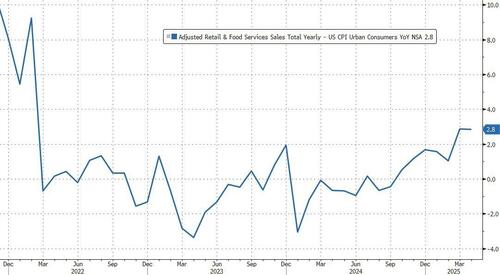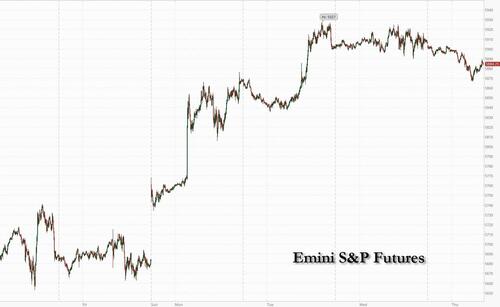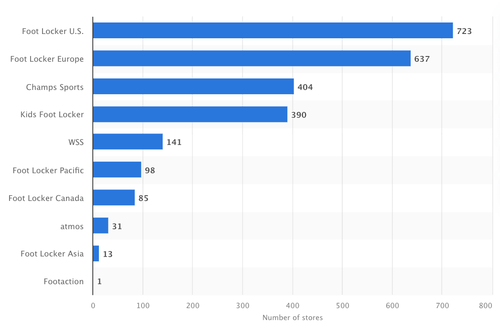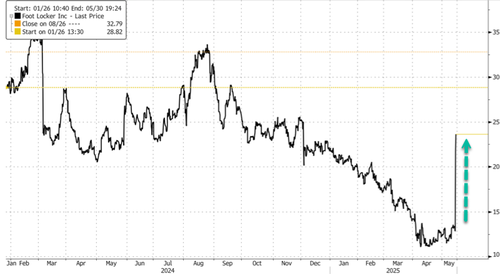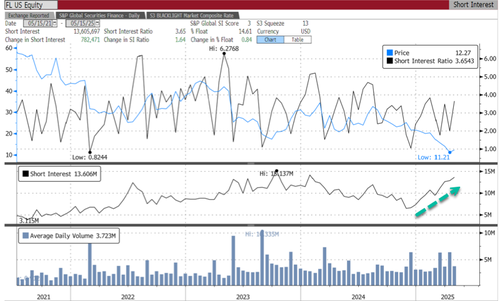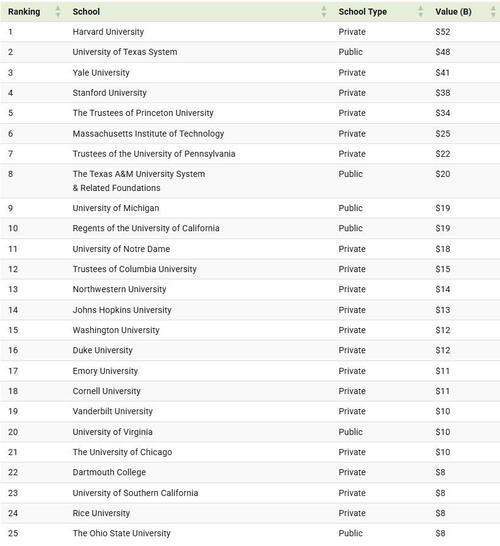To live without faith, without a patrimony to defend, without a steady struggle for truth – that is not living, but existing.
Distinction Matter - Subscribed Feeds
-
Site: Ron Paul Institute - Featured Articles
During the 1988 campaign, George W. Bush came to the Courthouse in Maryville, TN to speak at a rally for his Dad. As we were leaving, I told my friend and later Chief of Staff, Bob Griffitts, “Bob, he is better than his Dad.”
When he ran for President in 2000, then Governor Bush went all over the Country saying we needed a more humble foreign policy, and according to Foreign Policy Magazine, he “famously campaigned against nation building.”
The Independent Institute reported that in a 2000 debate, candidate Bush said “If we are an arrogant nation, they will resent us; but if we are a humble nation, but strong, they’ll welcome us.”
Wikipedia says Bush criticized President Clinton as being too interventionist and said: “If we don’t stop extending our troops all around the world in nation-building missions, then we’re going to have a serious problem down the road, and I’m going to prevent that.”
Because of statements like these, along with my favorable impression from 1988, and my strong opposition to Vice President Gore, I became enthused about the Bush campaign.
During all of my 15 campaigns for Congress, I held a Duncan Family Barbecue with 6,000 to 8,000 in attendance. I was very pleased when Gov. Bush rearranged his schedule just a few days before the election on very short notice to also attend.
We marched into the Knoxville Coliseum behind the University of Tennessee Pep Band, and he stood in the receiving line much longer than I expected. When I walked him back to his limousine, I said “Governor, you’re going to carry Tennessee.” He replied “If I do, I’ll win the election,” and that is exactly what happened.
That night, my son, Zane, said “Dad, I have never heard you so excited as when you shouted ‘the next President of the United States, George Bush!”
I had been a Pat Buchanan-American Firster all through the 90s, so you can imagine my disappointment when President Bush allowed himself and, more importantly, his foreign policy to be controlled by Neocons.
Of course, in spite of being put into a little secure room at the White House with Condoleeza Rice and the top two leaders of the CIA so they could put pressure on me, I shocked my district and voted against going to war in Iraq.
And then, over the next many years, Reps. Ron Paul and Walter Jones and I were the only Republicans in the U.S. House who consistently and repeatedly spoke and voted to bring our troops home from Iraq and Afghanistan many years before we did.
Then, after Sen. Rand Paul decided not to run for President in 2016, I became one of the first members of Congress to endorse Donald Trump for President. I did this because I thought he was the least hawkish of all who were running for the Republican nomination, and he had made some critical comments about the decision to go to war in Iraq.
But I was disappointed once again when he put Neocons like John Bolton and others into key positions in his Administration, appointments I think he later regretted.
With this history and background, you may think I am very foolish, but my hopes are up once again because of President Trump’s Inaugural Address and even more so because of his speech in Riyadh on Tuesday.
In his Inaugural Address, he said: “We will measure our success not only by little battles we win, but also by the wars that end, and perhaps most importantly, the wars we never get into.”
Then I was ecstatic when I heard what he had said in his speech in Riyadh: “But in the end, the so-called nation builders wrecked far more than they built, and the interventionists were intervening in complex societies that they did not even understand themselves.”
“No, the gleaming marvels of Riyadh and Abu Dhabi were not created by the so-called ‘nation builders’, Neocons or liberal non-profits, like those who spent trillions and trillions of dollars failing to develop Baghdad and so many other cities.”
He added: “The birth of a modern Middle East has been brought by the people of the region themselves—the people that are right here, the people who have lived here all their lives, developing your own sovereign countries, pursuing your own unique visions and charting your destinies in your own way.”
Trump also said what he called the “great transformation” of Saudi Arabia and the Middle East “has not come from western interventionists…giving you lectures on how to live and how to govern your own affairs.” These are words Ron Paul himself could have said.
This speech, along with numerous reports that Trump is tired of being manipulated by Netanyahu, his ending sanctions against Syria, entering negotiations with Iran, stopping the bombing of Yemen, and leaving Israel off his Middle East trip, all give hope for a different and perhaps more diplomatic, less hawkish U.S. foreign policy.
When you add to all these hopeful signs from Trump the May 9th column by Thomas Friedman entitled “This Israeli Government Is Not Our Ally”, change may be in the air.
Friedman wrote that “Netanyahu is not our friend” and added: “On the Middle East, you have some good independent instincts, Mr. President. Follow them.” This may be one of the very few times I have ever agreed with one of the longest-serving employees of the New York Times.
Now, I just wish there were a few more in Congress with the courage of Thomas Massie.
-
Site: PaulCraigRoberts.org
For those who have remained in ignorance of their certain future, here is a review of The Camp of the Saints
https://www.unz.com/article/when-reality-is-worse-than-fiction/
Comment by PCR:
In Raspail’s book the fall of France and all of Europe is instantaneous, with Russia following with a lag. In our reality, the collapse is in line with the boiling of a frog.
In the US the Democrats are the party of mass immigration. They opened the borders and kept them open and now are using the judiciary and media to prevent deportations. It is easy to recognize among our own politicians, professors, and media numerous counterparts to the characters in Raspail’s book. The money of ethnic Americans is being used to finance the invasion. As in Raspail’s book, guilt and pity prevent effective opposition to the overrunning of the country. Consider how many immigrant-invaders in the name of multiculturalism have achieved elected positions in state, local, and federal legislatures, how many there are serving as judges and prosecutors, university professors and school teachers, and you can see the power transformation that is underway.
Meanwhile the idiot white countries pick fights with Russia, China, and Iran. The feminists have transformed white women from child bearers to salary earners. The government has made it impossible for one-earner families to exist. The white birth rate has collapsed throughout the Western world. In Europe white ethnic women who are raped by immigrant-invaders are more likely to be punished for their complaints, which are often judged to be racist, than are their rapists, another indication of the loss of power of white ethnics to immigrant-invaders. Another indication is the development of no-go zones for white ethnics in their own cities. Another indication is the rise in racial intermarriage. White gentile ethnicities are on their way out. They are a disappearing race.
-
Site: PaulCraigRoberts.org
Do You Remember the Dumbshit White Democrat Government of Seattle that not only allowed but encouraged Antifa and Black Lives Matter to burn down the white business center and enabled the looting by defunding the police?
Well the dumbshit Democrats have seen the light:
Seattle City Council committee passes resolution to undo ‘defund the police’ initiatives https://thepostmillennial.com/seattle-city-council-committee-passes-resolution-to-undo-defund-the-police-initiatives#google_vignette
Seattle mayor reveals $47 MILLION payroll tax deficit as companies flee the Emerald City
Last week, the mayor of Seattle announced that the Emerald City collected $47 million less in payroll taxes last year as large companies continue to flee the liberal oasis.
“In 2018, the city council, led by Marxist Councilmember Kshama Sawant, passed the so-called “Head Tax” on the payrolls of large companies to fund affordable housing.” The Camp of the Saints is alive and well in Seattle. Elected Democrat officials seem to consist of mainly foreign immigrant-invaders. Are there any Americans in the Democrat party?
Ideological anti-white Democrats are incapable of governing. They can only destroy.
-
Site: PaulCraigRoberts.org
While Wall St and the Dumbshit Tech Geeks see the future in AI, the truth is AI means death for American cities and Americans’ jobs
Here is Bloomberg’s report:
AI is expected to wipe out between 37% and 43% of white-collar jobs in San Jose-Sunnyvale-Santa Clara, CA, Boulder, Co, Washington-Arlington-Alexandria, San Francisco-Oakland-Berkely, CA, Durham-Chaple Hill, NC, Trenton-Princeton, NJ, Seattle-Tacoma-Bellevue, WA, Austin-Round Rock-Georgetrown, TX, Ann Arbor, MI, Salt Lake City, UT, Boston-Cambridge-Newton MA, Huntsville, AL, Denver-Aurora-Lakewood, CO, Raleigh-Cary, NC, Madison, Wi
The more a city’s economy is oriented around white-collar knowledge work, the more exposed it is to AI.
If truth be known, Americans are too stupid to justify their existence.
Despite its reporting Bloomberg finds possible hope in AI.
-
Site: PaulCraigRoberts.org
As I and John Helmer do, Gilbert Doctorow has Suspicions about Trump’s “peace negotiations”
TRUMP’S UKRAINE PLAN:
PEACE OR DECEPTION?
-
Site: Zero HedgeUS Producer Prices Plunge Most Since COVID LockdownsTyler Durden Thu, 05/15/2025 - 09:00
Following the cooler than expected CPI, US Producer Prices plunged in April, down 0.5% MoM (vs +0.2% MoM exp) - the biggest drop since April 2020 (but we note that last month's 0.4% MoM decline was revised up to unchanged). The headline print was dragged down to +2.4% YoY (the lowest since Sept 2024)...
Source: Bloomberg
Under the hood, Prices for final demand services moved down 0.7 percent in April, the largest decline since the index began in December 2009.
Source: Bloomberg
Core Producer Prices plunged by the most on record (back to 2010)...
Source: Bloomberg
PPI Final Demand Services
Prices for final demand services moved down 0.7 percent in April, the largest decline since the index began in December 2009. Over two-thirds of the broad-based decrease can be traced to margins for final demand trade services, which dropped 1.6 percent. (Trade indexes measure changes in margins received by wholesalers and retailers.) Prices for final demand services less trade, transportation, and warehousing and for final demand transportation and warehousing services fell 0.3 percent and 0.4 percent, respectively.
- Product detail: Over 40 percent of the April decline in the index for final demand services is attributable to margins for machinery and vehicle wholesaling, which dropped 6.1 percent. The indexes for portfolio management, food and alcohol wholesaling, system software publishing, traveler accommodation services, and airline passenger services also fell. Conversely, prices for outpatient care (partial) advanced 0.3 percent. The indexes for furniture retailing and for inpatient care also moved up. (See table 2.)
PPI Final demand goods
Prices for final demand goods were unchanged in April following a 0.9-percent decrease in March. In April, the index for final demand goods less foods and energy increased 0.4 percent. In contrast, prices for final demand foods and for final demand energy declined 1.0 percent and 0.4 percent, respectively.
- Product detail: Among final demand goods in April, the index for general purpose machinery and equipment advanced 1.1 percent. Prices for residential electric power, fresh and dry vegetables, non-electronic cigarettes, and utility natural gas also moved up. Conversely, the index for chicken eggs dropped 39.4 percent. Prices for gasoline, gas fuels, diesel fuel, and primary basic organic chemicals also fell.
Margin pressure remains on American corporations...
Source: Bloomberg
It would appear that despite all the FUD, companies are soaking up any tariff price increases and NOT passing them on to customers.
Finally, energy prices are set to drag CPI and PPI even lower in the next month or so...
Source: Bloomberg
Goldman has lowered its PCE expectations:
Based on the details in the PPI and CPI reports, we estimate that the core PCE price index rose 0.11% in April (vs. our expectation of 0.19% prior to today's PPI report), corresponding to a year-over-year rate of +2.46%.
Additionally, we expect that the headline PCE price index increased 0.10% in April, or increased 2.18% from a year earlier.
But, but, but... the PhDs said tariffs were inflationary!!
-
Site: Zero HedgeWalmart Delivers Solid Earnings, Warns Of Imminent Price HikesTyler Durden Thu, 05/15/2025 - 09:00
Walmart reported better-than-expected first-quarter results for the period ending April 30 but cautioned that the trade war will raise prices on certain items as early as this month. The warning underscores that the mega retailer's low-price model is threatened amid an ongoing value war with other U.S. retailers.
The nation's largest retailer posted first-quarter results showing a 4.5% year-over-year sales increase at U.S. Walmart stores, surpassing the Bloomberg Consensus estimate of 3.85%. Adjusted earnings per share came in at 61 cents, also beating the 58-cent estimate.
1Q25 results demonstrate that Walmart's pricing power to offer low-cost products continues to increase.
Here is the highlight of the 1Q results (ended April 30):
Adjusted EPS: $0.61 vs. $0.58 estimate
Revenue: $165.61B (+2.5% y/y) vs. $166.02B estimate
U.S. Comparable Sales (ex-gas): Walmart
-
Walmart stores: +4.5% vs. +3.85% estimate
-
Sam's Club: +6.7% vs. +4.93% estimate
E-Commerce Growth
-
Walmart U.S.: +21% vs. +13.8% estimate
-
Sam's Club: +27% vs. +14.3% estimate
Operating Cash Flow: $5.4B
From the earnings deck:
Total revenues/gross profit
Operating expense/income detail
EPS/Cash flow
Additional details...
Walmart maintained its full-year guidance, which was issued in February.
-
Q2 Sales Growth Forecast: +3.5% to +4.5%
-
FY2026 EPS Guidance (unchanged): $2.50–$2.60 vs. $2.61 estimate
-
FY2026 Net Sales Growth (unchanged): +3% to +4%
While Walmart delivered another solid quarter of sales and earnings growth, the focus has shifted to the growing negative impact of the trade war.
Goldman analysts Mark Jordan, Emily Ghosh, and others commented on Walmart's earnings:
WMT reported 1Q25 adj. EPS of $0.61, above GS/consensus (Refinitiv) of $0.58/$0.58. Walmart US SSS of +4.5% tracked better than consensus at +3.9%, driven by traffic (+1.6%) and average ticket (+2.8%). By category, grocery was up +MSD, noting increased transactions and units along with inflation of ~150 bps, due primarily to eggs. Health & wellness grew +high-teens, driven by higher script counts, mix shift toward branded from generic, and strong over-the-counter sales. General merchandise was slightly negative, reflecting growth in unit volumes, which was more than offset by MSD like-for-like deflation, while seasonal events were strong; WMT called out sales softness in electronics, home, and sporting goods, offset by strength in toys, automotive, and kids' apparel. Global/Walmart U.S. e-commerce net sales grew +22%/+21% (vs. +16%/+20% in 4Q), while global/Walmart U.S. advertising grew +50% including VIZIO/+31% ex VIZIO (vs. +29%/+24% in 4Q), respectively.
They offered their take on guidance:
WMT reiterated 2025 guidance to net sales growth of +3.0-4.0% (vs. GS/consensus of +4.0%/+3.6%), adj. operating income growth of +3.5-5.5%, and adj. EPS of $2.50-2.60 (vs. GS/consensus at $2.60/$2.61). For 2Q, WMT is guiding to net sales growth of +3.5-4.5% (vs. GS/consensus of +4.0%/+3.5%), while the company is not guiding to operating income growth or EPS given the dynamic macro backdrop.
And maintained their "Buy" rated 12-month price target of $99.
In a post-earnings interview, CFO John David Rainey warned that price hikes at Walmart stores will begin this month: "If you've not already seen it, it will happen in May and then it will become more pronounced."
The retailer warned about trade war uncertainty and how the situation "changes by the week," adding, "The lack of clarity that exists in today's dynamic operating environment makes the very near-term exceedingly difficult to forecast."
Walmart's supply chain offers some insulation from the trade war. About 66% of its merchandise—primarily groceries—is sourced domestically, accounting for roughly two-thirds of its U.S. business. However, CFO John David Rainey noted that imported categories such as electronics, apparel, and toys could face additional price hikes in the coming months.
"We will do our best to keep our prices as low as possible but given the magnitude of the tariffs, even at the reduced levels announced this week, we aren't able to absorb all the pressure given the reality of narrow retail margins," said CEO Doug McMillon in a statement.
Takeaway: Walmart is not entirely immune to tariffs. Despite the 90-day cooling period between the U.S. and China and a substantial tariff rate reduction on both sides of the Pacific, price hikes are still coming. As cost pressures mount, the retailer's ability to fully absorb them is becoming increasingly difficult, potentially jeopardizing its low-price value model amid an ongoing, multi-year value war with other U.S. retailers.
* * *
See: Walmart's full earnings presentation...
-
-
Site: AsiaNews.itBombings continue in Myanmar's western state, long at the heart of tensions with the Muslim minority. The Arakan Army now administers much of the region, but the Rohingya issue remains unresolved. The community is still in the crosshairs of the three armed groups vying for territorial control. Bangladesh, in seeking China's support, proposed the creation of an independent state, but the initiative has made no progress.
-
Site: Zero HedgeUS Retail Sales Surprises To The Upside, But...Tyler Durden Thu, 05/15/2025 - 08:41
If BofA's omniscient analysts are right (and they have been serially on the correct side of this data series relative to consensus for months), then traders should brace for disappointment this morning for the retail sales data.
But...
For once, the BofA analysts were incorrect as headline retail sales rose 0.1% MoM (better than the 0.0% MoM exp, but this follows a sizable upward revision in March to +1.7% MoM (from +1.4%). With the revision that left retail sales up 5.2% YoY - near its highest since Dec 2023
Source: Bloomberg
Under the hood, Sporting Goods sales declined the most while Building Materials rose the most...
The (tariff front running) surge in Motor Vehicle Sales last month has gone...
Source: Bloomberg
As a reminder, this data is nominal, so adjusting ()very roughly) for inflation, retail sales rose 2.8% YoY, equalling its highest since Feb 2022...
Source: Bloomberg
More problematically, the Control Group - which feeds directly into GDP - was a big miss, dropping 0.2% MoM (vs expectations of a 0.3% MoM rise)...
Source: Bloomberg
So, the good news is bottom-up Americans are spending... but top-down GDP may be negatively affected.
-
Site: AsiaNews.itThe arrest of Istanbul's mayor has reversed the positive course the country had embarked upon. A study by the EBRD confirms that boycotts and protests have disrupted efforts to curb inflation, triggering "turmoil". In April, the Central Bank raised interest rates after months of holding steady. New arrests among university students have followed clashes with police.
-
Site: LifeNews
Health and Human Services Secretary Robert F. Kennedy, Jr. said Wednesday that he has ordered a top-down review of the abortion drug mifepristone in light of “alarming” research showing the Food and Drug Administration (FDA)-approved pill does far more harm to women than previously reported.
The latest research is “alarming,” Kennedy said during a hearing before the Senate Health, Education, Labor and Pensions Committee. “And clearly it indicates at the very least the [FDA] label should be changed.”
“I’ve asked Marty Makary, who’s the director of the FDA, to do a complete review and to report back,” Kennedy added.
Please follow LifeNews on Rumble for the latest pro-life videos.
A new study on the chemical abortion drug shows 11% of women experience adverse effects serious enough to send them to the ER@SecKennedy just pledged to conduct a top-to-bottom review of the drug – and said the FDA label needs to change
That’s a win for life pic.twitter.com/gy65iCZjI5
— Josh Hawley (@HawleyMO) May 14, 2025
As Dr. Susan Berry reported for CatholicVote April 28, a “bombshell study” by the Ethics and Public Policy Center (EPPC) “revealed nearly 11% of women experience severe or life-threatening complications after an abortion via the drug mifepristone – a rate that is 22 times higher than indicated on the drug’s label approved by the federal Food and Drug Administration (FDA).”
EPPC “analyzed 865,727 mifepristone abortions that occurred between 2017 and 2023, a number that is ‘28 times larger than in all FDA clinical trials combined,’” Berry reported.
CatholicVote reported the following day that the Catholic advocacy group had “joined a coalition of over 30 pro-life organizations Tuesday in urging the Trump administration to evaluate the Food and Drug Administration’s (FDA) approval of the abortion drug mifepristone, immediately following the release of a new study revealing serious health risks.”
The coalition letter argued “that mifepristone—used in over 60% of US abortions—was irresponsibly approved in 2000 and continues to harm women.”
“We respectfully ask that you take swift action to protect the rights of states to defend unborn children, in keeping with your campaign pledge to return the issue of abortion to the states,” the letter read, calling on the administration to stand firm “as a defender of the weak and vulnerable.”
LifeNews Note: Joshua Mercer writes for CatholicVote, where this column originally appeared.

The post HHS Secretary Robert Kennedy Will Investigate Dangerous Abortion Pill appeared first on LifeNews.com.
-
Site: Zero HedgeZelensky In Istanbul Responds To 'Insult' Of Putin Sending Junior Officials To Talks: "I Am Here"Tyler Durden Thu, 05/15/2025 - 08:30
A team of Russian negotiators are in Istanbul on Thursday for the first direct peace talks with Ukraine in more than three years, with Russia's Foreign Ministry officials saying that the delegation is "ready for serious work".
President Putin, who as expected is not there in person, tapped his aide and former culture minister Vladimir Medinsky to lead the talks, which many Western analysts have claimed is an 'insult' given it's not someone more senior. Medinsky, it should be remembered, oversaw the failed 2022 peace talks with Kiev in the weeks after the February invasion.
Alongside Medinsky are Deputy Foreign Minister Mikhail Galuzin, Deputy Defense Minister Alexander Fomin and Igor Kostyukov, the head of Russia’s military intelligence agency (GRU).
Supporting these main negotiators are group of advisers, including senior officials from the Foreign and Defense Ministries, along with Putin aides. The Kremlin confirmed the identities of its negotiating team by releasing footage of Putin meeting with the negotiation group late Wednesday.
On Wednesday evening, Russian President Vladimir Putin held a meeting to discuss arrangements for talks with Ukraine, due to take place today in Istanbul, Kremlin Spokesman Dmitry Peskov told reporters:https://t.co/hRmXK7daoA
— TASS (@tassagency_en) May 15, 2025
Video: Kremlin. ru pic.twitter.com/1e7DHMlFgvOther top officials were seen present in the send-off meeting in Russia, among them Defense Minister Andrei Belousov, Russia’s chief of the General Staff Valery Gerasimov, Security Council Secretary Sergei Shoigu and Federal Security Service (FSB) Director Alexander Bortnikov - which perhaps underscores that Moscow is indeed taking the Istanbul talks very seriously.
But many are calling this a 'slap in the face' and insult to Trump who has strongly backed direct talks, and who even urged Putin to be there in person.
Trump has warned that he is "always considering" additional sanctions against Russia if he believes Moscow is blocking or snubbing the peace process.
Putin sending the same people to Istanbul who, back in 2022, demanded Ukraine's surrender on his behalf is a slap in the face to the Trump administration’s efforts to end this war. The message is clear: fuck off — I have my own objectives, and they haven’t changed since 2022,… https://t.co/8Sj3mprJXe
— Sławomir Dębski (@SlawomirDebski) May 14, 2025As for Ukraine's President Zelensky, he's has for the past week been making a big show of how he's willing to be in Istanbul, and Putin is not. He's been repeatedly goading Putin to be there, saying that if he's not - it proves Moscow is not interested in the peace process.
However, this has clearly been a performative effort more geared to show President Trump that Kiev is 'willing' - likely in hopes that Washington gives Zelensky stronger backing, and of course a steady supply of weapons and intelligence. To some degree, Zelensky's bellicose rhetoric may itself have sabotaged talks before they had even begun.
But Zelensky has shown up in Turkey, somewhat surprisingly. "I am here" - he has emphasized (in once again a bit of messaging primarily aimed at the White House). He's meeting with Erdogan, but apparently this is separate, and happening in Ankara.
Zelensky to Putin from Ankara:
— Clash Report (@clashreport) May 15, 2025
"I am here." pic.twitter.com/67RjF4QFqbThe Wall Street Journal's take is as follows:
"Ignoring Ukrainian President Volodymyr Zelensky’s call to meet for direct high-level talks in Turkey, Russian leader Vladimir Putin dispatched to Istanbul a team of junior officials, making it uncertain that negotiations between the warring nations would occur at all."
But Russia analyst and author of Forged In War: A Military History of Russia From its Beginnings To Today, Mark Geleotti, has a very different take, featured below [emphasis ZH]:
It’s easy (and not wholly untrue) to slam Vladimir Medinsky, leading the Russian delegation to Istanbul as a nobody, but perversely, although I think it monstrously unlikely anything meaningful will come from the talks, the composition of the delegation is encouraging.
Putin was never likely to attend, not least as he wasn’t going to allow it to look as if he had been manipulated and dared by Zelensky. Besides, sometimes it can help break a logjam (think Reagan/Gorbachev), but leaders usually turn up to seal the deal at the end of the process, after experts have done all the hard preparatory work away from the cameras.
Do we honestly think two men who so plainly loathe each other and who have been shamelessly posturing for Trump's benefit were going to reach some kind of meeting of minds? Possible, but unlikely.
Medinsky led the talks in 2022 that failed to reach a usable deal (we can discount the myth that Zelensky was about to agree to Russia's demands until Boris Johnson nixed it) so this is meant to signal continuity in process and demands.
Medinsky's very lack of personal authority isn’t a snub, so much as a sign that Putin wants to manage any process by remote control. He's a human drone, which at least means any positions he advances/agrees already have VVP's ok
The rest of the delegation likewise isn't showy (though the presence of military intel chief Kostyukov is interesting as they were key in POW swaps) but likewise meant to signal a willingness to do serious work. (Although this doesn’t necessarily mean make necessary compromises).
Of course, with no hint that Russia is about to relax its implausible and unfair demands, this may all be for show. It probably is, alas. But talking is always good as there is a *chance*, however minuscule, that talks can lead somewhere.
So although Medinsky is a shallow ideologist, and sending him is in a way a snub, a means for Putin to try and reject Zelensky's challenge while not looking wholly uncooperative in Trump's eyes.
…whereas before I was 99% pessimistic about the talks, now I’m only 98% so. That is as much room for optimism as there is, these days.
-
Site: Fr. Z's BlogThe Eternal City became noticeably brighter with the rising of the sun at 5:48. The light will diminish significantly at 20:26. The Ave Maria Bell is in the 20:45 cycle right now. It is Feast of St. Jean Baptiste de … Read More →
-
Site: Zero HedgeFutures Drop Ahead Of Data Deluge, Powell SpeechTyler Durden Thu, 05/15/2025 - 08:15
US equity futures are lower as investors take profits on Thursday and tech stocks fell as investors worried about an economic slowdown after Steve Cohen warned the chance of a recession is 45% and today’s retail sales numbers are expected to be a miss. As of 8:00am ET, S&P futures are down 0.4%, rebounding from session lows after Walmart reported solid earnings; Nasdaq futures dropped 0.5% with Nvidia, Palantir and Tesla falling about 2% in early trading. On Wednesday, the S&P failed at 5,900 for the second consecutive day. The silver lining according to JPM is that yesterday, NVDA turned positive on the year, joining META and MSFT; if the remaining members follow suit, there is another ~10% upside to the index assuming positive members are flat. YTD, AMZN is -4.2%, GOOG -12.6%, TSLA -13.9%, and AAPL -15.2%. In trade news, China removed curbs on rare earth exports to the US. Trump says India is willing to drop is tariffs on US goods. Brent sank below $64, down more than 3% after President Donald Trump said the US is getting closer to a deal on Iran’s nuclear program, fueling concern that additional oil supply may pressure the market. Bond yields and the USD are lower. Today’s macro data focus is on Retail Sales which are expected to remain unchanged in April (versus 1.5% prior); PPI, Jobless Claims, Philly Fed and Empire Manufacturing numbers are due at 8:30 am in New York, while Industrial Production prints at 9:15am. Also, traders are looking ahead to a speech by Federal Reserve Chair Jerome Powell.
In premarket trading, UnitedHealth shares sank after the WSJ reported it’s under criminal investigation for possible Medicare fraud. Walmart delivered another quarter of solid sales and earnings growth, and cautioned that tariffs and increasing economic turbulence means even the world’s largest retailer can’t hold off on price increases forever. Shares gained 2.4% premarket. Magnificent Seven stocks are lower as risk appetite falters (Tesla -1.8%, Apple -1%, Meta Platforms -1%, Amazon -0.8%, Alphabet -0.7%, Nvidia -0.6%, Microsoft -0.5%). Here are some other notable premarket movers:
- Alibaba ADRs (BABA) decline 5.6% after reporting revenue that missed estimates, dragged by a slowing international e-commerce arm and its Cainiao logistics business that’s under restructuring.
- Boot Barn (BOOT) rises 13% after the retailer of western wear gave a forecast for 1Q same-store sales growth that surpassed Wall Street estimates, despite an expected hit from tariffs.
- Cisco Systems (CSCO) rises 3.3% after the company gave a solid forecast for revenue in the current quarter, a sign the largest seller of networking gear is benefiting from demand for systems using AI technology.
- CoreWeave (CRWV) shares fall 6.6% after the cloud-computing provider’s quarterly profit forecast missed estimates due to some spending being brought forward.
- Crowdstrike Holdings (CRWD) shares are down 2.4% in premarket trading, after Mizuho Securities downgraded the software company to neutral from outperform.
- DXC Technology (DXC) shares are down 14% after the company reported forecast adjusted earnings per share for the first quarter and 2026 full-year guidance that missed the average analyst estimate.
- Dlocal (DLO) shares gain 21% after the financial technology company beat earnings expectations and unveiled plans for a special dividend.
- Foot Locker (FL) is up 84% with Dick’s Sporting Goods to buy it in a cash or stock deal implying an equity value of about $2.4 billion and an enterprise value of about $2.5 billion.
- JetBlue (JBLU) falls 1.6% after Raymond James downgraded the airline company to market perform from outperform, citing a more balanced risk-reward amid an improvement in sentiment.
- Luminar (LAZR) drops 13% after the automotive technology company’s CEO Austin Russell resigned as CEO, overshadowing better-than-expected first-quarter sales.
- NetEase ADRs (NTES) are up 6.7% after the China-based video-game company reported first-quarter results that beat expectations.
- New Fortress Energy (NFE) shares slump 38% after the energy infrastructure firm saw adj. Ebitda plunge in the first quarter, with analysts flagging that the sale of its Jamaican assets will dent cash flow.
There’s also some big company news to digest. Trump wants Apple to stop moving iPhone production to India, while Starbucks is said to be considering options to revamp its China business, including a possible stake sale.
Economic forecasters this week have said that while the Trump administration’s temporary trade deal with China has reduced the risk of a recession, the overall economy is likely to slow. “There’s definitely more clarity than a few weeks ago,” Dubravko Lakos-Bujas, chief of global markets strategy at JPMorgan Chase & Co., said in a Bloomberg Television interview. “Some of the uncertainty around trade, tariffs, policy started to get reined in.”
“The market is globally priced for perfection,” said Michael Nizard, head of multi-asset at Edmond de Rothschild Asset Management. “The retail sales figures should reveal that consumer is already depressed in terms of business confidence.”
Meanwhile, billionaire Steve Cohen, speaking at the Sohn Investment Conference on Wednesday, put the chances of a US recession at about 45%. Cohen, the founder of hedge fund Point72 Asset Management, said he doesn’t expect the Federal Reserve to cut rates right away, because “they are going to be worried about inflation from tariffs.” He said he expects US economic growth next year to slow to 1.5% or less, “which is OK but not phenomenal.”
Looking at today's macro data, Retail sales are expected to rise by a tepid 0.1% in April (versus 1.5% prior) according to Bloomberg economists, while a survey of economists is pointing to flat month-on-month sales. PPI and Empire Manufacturing numbers are due at 8:30 am in New York. Traders were looking ahead to a speech by Federal Reserve Chair Jerome Powell, as well as data on manufacturing and retail sales, for the next readout on US growth and inflation. Economists are expecting no growth in retail sales in April as consumers cut back on some purchases.
European stocks retreat for a second day. Energy stocks lead declines, driven by a fall in oil prices following a report that Iran is willing to forgo nuclear weapons in a deal with the US, while utilities and food and beverage stocks outperform. Among individual stocks, insurance firm Allianz drops after disappointing results. Stoxx 600 falls 0.2% to 542.88 with 327 members down, 263 up, and 10 little changed. Here are the biggest European movers:
- KBC shares rise as much as 2.6% after the Belgian lender reported earnings that analysts said were roughly in line with expectations, and saw a boost from increased insurance revenues.
- Engie shares gain as much as 2.2% after the utility produced what analysts said were strong results that should provide further comfort around full-year guidance and the dividend.
- Serco shares rise as much as 6.9% after the outsourcing-services company announced the award of three contracts with a combined value of more than £1b to provide maritime services for the Royal Navy.
- Watches of Switzerland shares rise as much as 6.7% after the watch seller’s update showed no deterioration in trends in either the UK or US, providing some relief to investors.
- Energy stocks are the worst-performing sector as oil falls following a report that Iran is willing to forgo nuclear weapons in a deal with the US in exchange for sanctions relief.
- Allianz shares fall as much as 3.9% after the German insurer reported earnings that analysts called disappointing.
- 3i shares drop as much as 8.1% following the private equity firm’s full-year results, with net asset value per share coming in marginally below analyst expectations.
- Deutsche Telekom shares decline as much as 1.2% after the telecom operator reported mixed trends in its home market Germany.
- Thyssenkrupp shares fall as much as 14% after the German firm reported what Morgan Stanley called a substantial miss. Analysts see challenges reaching full-year guidance.
- Orsted shares drop as much as 4.7%, to the lowest since December 2016, after Berenberg analysts cut their rating on the stock to hold from buy.
- Siemens shares fall as much as 4.4% after the German industrial group reported a solid set of second-quarter earnings, with analysts noting continued improvement for the key Digital Industries division.
- CVC Capital shares fall as much as 3.2%, with analyst saying that the buyout firm’s fee paying AUM for the first quarter disappointed as some funds reached the end of their fee-paying periods.
Earlier in the session, Asian stocks slipped, poised to snap a four-day win streak, as the rally fueled in part by reduced fear over US tariffs fizzled. The MSCI Asia Pacific Index fell as much as 0.5%, with Toyota, and Sony among the biggest drags, as a stronger yen weighed on Japanese equities. Key gauges fell more than 1% each in Thailand and the Philippines. Tencent dipped despite upbeat earnings, weighing on key Hong Kong gauges, as investors await Alibaba’s results later Thursday. The market had been looking for major Chinese tech reports to provide the next catalyst. Despite the muted response to the US-China trade truce, some market watchers are turning more positive on Chinese stocks. Strategists at Goldman Sachs have raised their Chinese stocks index targets. Morgan Stanley said MSCI China’s onshore stocks saw “meaningful improvement” in the first quarter results over the previous three months, marking the first in-line outcome after 14 quarters of misses.
In FX, the Bloomberg Dollar Spot Index declines 0.3%. The pound adds 0.2% with little reaction seen after UK GDP in the first quarter topped estimates as the period precedes a sharp rise in US tariffs.
In rates, treasuries are slightly richer across the curve with gains led by front end and belly, unwinding a portion of Wednesday’s selloff when Fed-policy pricing saw a hawkish shift. US yields are 2bp-3bp lower across maturities led by 5-year sector with 10-year near 4.51%. European government bonds also gain: bunds and gilts outperform, supporting Treasuries, following wave of European data including UK GDP and industrial production and French CPI. Slide in oil futures also supports Treasuries. US session includes April retail sales data and remarks by Fed Chair Powell on the central bank’s monetary policy framework review (text release expected at 8:40am New York time).
In commodities, WTI crude oil futures have pared a 4.2% drop to about 3.7%, extending losses for a second day after US President Trump said an agreement to curb Iran’s nuclear program is closer. Spot gold falls $11 to around $3,167/oz having pared an earlier fall.
US economic data calendar includes May Empire manufacturing, April retail sales, PPI, weekly jobless claims, May Philadelphia Fed business outlook (8:30am), April industrial production (9:15am), March business inventories, May NAHB housing market index (10am). Fed speaker slate includes Powell (8:40am) and Barr (2:05pm)
Market Snapshot
- S&P 500 mini -0.4%
- Nasdaq 100 mini -0.6%
- Russell 2000 mini -0.2%
- Stoxx Europe 600 -0.2%
- DAX -0.3%
- CAC 40 -0.2%
- 10-year Treasury yield -3 basis points at 4.5%
- VIX +0.6 points at 19.2
- Bloomberg Dollar Index -0.3% at 1229.3
- euro +0.3% at $1.1208
- WTI crude -4.1% at $60.55/barrel
Top Overnight News
- U.S. President Donald Trump said on Thursday that the United States was getting very close to securing a nuclear deal with Iran, and Tehran had "sort of" agreed to the terms. The agreement would see the country foreswear highly enriched uranium in exchange for an easing of economic sanctions. RTRS
- U.S. President Donald Trump said on Thursday that India had offered a trade deal that proposed "no tariffs" for American goods, while expressing his dissatisfaction with Apple's plans to invest in India. New Delhi is seeking to clinch a trade deal with the U.S. within the 90-day pause announced by Trump on April 9 on tariff hikes for major trading partners. RTRS
- US officials seeking to negotiate trade deals around the world are not working to include currency policy pledges in the agreements, according to a person familiar with the matter. Foreign-exchange markets are on edge over concerns President Donald Trump’s administration is seeking a weaker greenback and might use trade bargaining to achieve that goal. BBG
- Trump asked Apple’s Tim Cook to stop plans to move iPhone output to India. The president said Apple will increase production in the US as a result of their discussion. BBG
- US authorities are preparing to announce one of the biggest cuts in banks’ capital requirements for more than a decade, marking the latest sign of deregulation agenda for the Trump administration. FT
- Trump says the US will upgrade the F-35 to an F-55; will do an F-22 super, an upgrade on the F-22.
- UnitedHealth shares dropped premarket after the WSJ reported it’s under criminal investigation for possible Medicare fraud. The company said it hasn’t been notified by the DOJ. BBG
- Japan's top trade negotiator, Ryosei Akazawa, could travel to Washington as soon as next week for a third round of trade talks with the U.S., two sources with knowledge of the plans told Reuters on Thursday. RTRS
- Ignoring Ukrainian President Volodymyr Zelensky’s call to meet for direct high-level talks in Turkey, Russian leader Vladimir Putin dispatched to Istanbul a team of junior officials, making it uncertain that negotiations between the warring nations would occur at all. WSJ
- Oil demand growth to slow according to the latest IEA report – “Global oil demand growth is projected to slow from 990 kb/d in 1Q25 to 650 kb/d for the remainder of the year as economic headwinds and record EV sales curb use.” IEA
Tariffs/Trade
- EU Trade Commissioner Sefcovic says the US and EU have agreed to intensify trade talk contacts.
- WTO chief warned that US bilateral tariff deals could put trade principles at risk and said global trade was in a crisis despite the recent de-escalation of the US-China tariff war, according to FT.
- US Treasury secretary Bessent says they can accomplish "a lot" over the next 90 days; will have a series of negotiations to prevent escalation with China again.
A more detailed look at global markets courtesy of Newsquawk
APAC stocks were predominantly lower following the mixed handover from Wall St, where the major indices were somewhat choppy and small caps underperformed as yields edged higher. ASX 200 traded indecisively but eventually eked mild gains in the aftermath of the stronger-than-expected jobs data from Australia. Nikkei 225 underperformed following recent currency strength and as earnings results remained in the spotlight in Japan. Hang Seng and Shanghai Comp were lacklustre amid little in the way of fresh catalysts to spur momentum, while Tencent shares traded indecisively post-earnings and Alibaba results are scheduled for release today.
Top Asian News
- Chinese President Xi hopes the Danish Chamber of Commerce in China and member companies will continue to role as a bridge between China and Denmark and between China and Europe, according to Xinhua.
- PBoC Governor Pan said China welcomes more outstanding Latin American market players to issue Panda bonds in China and share market development opportunities, while he added that China and Latin America should promote financial cooperation in a wider range of fields and a deeper level.
Subdued sentiment across Europe after the predominantly lower APAC handover, and following the mixed handover from Wall St, where the major indices were somewhat choppy and small caps underperformed as yields edged higher. Newsflow this morning has been light but earnings picked up, whilst current focus remains on geopolitical ongoings with US President Trump in the Middle East, consolatory language from Iran, and a likely no-show from Russia President Putin in Russia-Ukraine peace talks in Turkey. Sectors are mostly a defensive bias and in line with the cautious mood across the markets.
Top European News
- Plans for a reset of UK-EU relations hit trouble due to fishing rights and youth mobility as EU member states demanded further concessions from the UK, according to the FT.
FX
- DXY subdued and contained within Wednesday's confines amid a lack of fresh catalysts overnight, n a 100.58-101.05 range at the time of writing, within yesterday's 100.27-101.14 parameter.
- EUR ekes mild gains and trades on either side of the 1.1200 level after recent fluctuations, and with ECB speakers scheduled later, although data and speakers today are not likely to shift the dial much.
- GBP is slightly firmer following better-than-expected UK GDP data; GBP/USD resides within yesterday's 1.3250-1.3360 range.
- USD/JPY retreated overnight as the underperformance in Japanese stocks spurred some haven flows into the yen.
- Antipodeans are subdued in-fitting with the broader risk tone; mild support was seen in AUD/USD following the stronger-than-expected employment data from Australia.
- PBoC set USD/CNY mid-point at 7.1963 vs exp. 7.2217 (Prev. 7.1956).
Fixed Income
- Another contained start for fixed income with USTs marginally in the green while peers across the pond resided slightly in the red in the early morning.
- USTs at a 109-26 peak with gains of a handful of ticks. While firmer, the benchmark remains markedly shy of peaks from the last three sessions at 110-09+, 110-15 and 110-19+ respectively.
- Bunds find themselves attempting to make a footing above the break-even mark at the top-end of a 129.13 to 129.47 band.
- Gilts gapped higher by 17 ticks, before then slipping to a shortlived 91.02 low given the readacross from EGBs at the time. Currently, at the mid-point of a 91.02-22 band.
- UK sells (via tender) GBP 2.0bln 0.125% 2028 Gilt: b/c 3.52x, average yield 3.768% & tail 0.7bps
Commodities
- WTI and Brent are suffering losses of USD 2/bbl, with commentary surrounding Iran applying steady pressure overnight and through the morning so far. US President Trump said the US is getting close to a deal with Iran, and they are in serious peace negotiations, adding that Iran has "sort of" agreed to the terms of a deal. This constructive commentary surrounding the nation pushed benchmarks to fresh session lows, adding to overnight losses. Losses overnight also stemmed from geopolitics, following a report that Iran is ready to sign an agreement with certain conditions in exchange for the lifting of sanctions and would commit to never making nuclear weapons and getting rid of its stockpiles of highly enriched uranium. The aforementioned lows for WTI and Brent are currently USD 60.65 and 63.63/bbl.
- Spot Gold is extending on recent losses with demand subdued as it sits below the USD 3,200/oz mark. The trend seen for most of this week remains intact, with the metal continuing to be hit by higher yields, particularly on the short end.
- Copper Futures are lower by a percent, mostly owing to a downbeat risk sentiment in APAC hours. It currently trades towards session lows of USD 9,467/t, after being modestly pressured around the time of Trump commentary.
- IEA lifts 2025 average oil demand growth forecast by 20k BPD to 740k BPD on upward revision to GDP growth forecast and lower oil prices; sees global oil demand growth dropping to 650k BPD for remainder of 2025, from 990k BPD in Q1. “Increased trade uncertainty is expected to weigh on the world economy and by extension oil demand,”. IEA sees oil inventories rising by around 720k BPD in 2025 as global supply rises expected to considerably outpace demand growth. IEA hikes 2025 global supply growth forecast to 1.6mln BPD, up by 380k BPD from previous month's report on higher Saudi production outlook. IEA raises 2026 average oil demand growth forecast to 760k BPD (prev forecast 690k BPD).
Geopolitics: Ukraine
- Russian President Putin was not on a list of negotiators the Kremlin published for talks with Ukraine in Istanbul on Thursday
- Russian Kremlin spokesperson Peskov says no chance Russian President Putin will take part in Turkey talks, according to Ria.
- US President Trump says he will go to the Russia-Ukraine talks if appropriate.
Geopolitics: Middle East
- Qatar's PM said Israeli attacks in Gaza this week send a signal that they are not interested in negotiating a ceasefire, while he added that a US humanitarian plan for Gaza is not necessary and the UN should be allowed to deliver aid, according to CNN.
- Gaza Humanitarian Foundation announced it will launch operations in the Gaza Strip before the end of the month and stated that Israel has agreed to expand the number of distribution sites to serve the entire population of Gaza.
- US President Trump said Qatar is working with the US on negotiating an Iran deal and he wants to see Iran thrive.
- Iranian President Pezeshkian said Iran will not bow to any bullying from US President Trump who he suggested thinks that he can come to the region, chant slogans, and scare them.
- Iran is ready to sign an agreement with certain conditions in exchange for the lifting of sanctions and would commit to never making nuclear weapons, as well as getting rid of its stockpiles of highly enriched uranium, according to a top advisor to the Supreme Leader cited by NBC News.- US President Trump says the US getting close to doing a deal with Iran; in serious negotiations to achieve peace; don't want to take a second step and threaten Iran. Want to end Iran in an intelligent way, not destructive
Geopolitics: Other
- China's Hainan Maritime Safety Administration warned of military training taking place in an area of the South China Sea from May 15th to 16th and prohibited entry, while it noted there were some drills near Vietnam and China's Hainan.
- Russia sent a fighter jet to "check the situation" as Estonia was attempting to detain a Russian shadow fleet tanker, according to the Estonian Foreign Minister; jet violated NATO territory for "around a minute".
US Event Calendar
- 8:30 am: May Empire Manufacturing, est. -8, prior -8.1
- 8:30 am: Apr Retail Sales Advance MoM, est. 0%, prior 1.4%, revised 1.45%
- 8:30 am: Apr Retail Sales Ex Auto and Gas, est. 0.3%, prior 0.8%, revised 0.86%
- 8:30 am: Apr Retail Sales Ex Auto MoM, est. 0.3%, prior 0.5%, revised 0.56%
- 8:30 am: Apr PPI Final Demand MoM, est. 0.2%, prior -0.4%
- 8:30 am: Apr PPI Ex Food and Energy MoM, est. 0.3%, prior -0.1%
- 8:30 am: Apr PPI Final Demand YoY, est. 2.5%, prior 2.7%
- 8:30 am: Apr PPI Ex Food and Energy YoY, est. 3.1%, prior 3.3%
- 8:30 am: May 10 Initial Jobless Claims, est. 227.5k, prior 228k
- 8:30 am: May 3 Continuing Claims, est. 1890k, prior 1879k
- 8:30 am: May Philadelphia Fed Business Outlook, est. -11, prior -26.4
- 9:15 am: Apr Industrial Production MoM, est. 0.1%, prior -0.3%
- 9:15 am: Apr Capacity Utilization, est. 77.8%, prior 77.8%
- 10:00 am: Mar Business Inventories, est. 0.2%, prior 0.2%
- 10:00 am: May NAHB Housing Market Index, est. 40, prior 40
Central bank speakers
- 5:00 am: 2nd Thomas Laubach Research Conference
- 8:40 am: Fed’s Powell Speaks on Framework Review
- 2:05 pm: Fed’s Barr Gives Opening Remarks
DB's Jim Reid concludes the overnight wrap
The strong recent equity rally showed some signs of exhaustion over the past 24 hours, even though gains for the tech mega caps helped the S&P 500 (+0.10%) extend its gains since the closing low on April 7 to +18.26%. On the other hand, Treasuries came under renewed pressure with the 10yr yield (+7.1bps) closing above 4.5% for the first time since February as investors continued to price out Fed rate cuts and increased their focus on the US fiscal outlook. The moves added to the mixed performance across US asset classes since early April, with the S&P 500 now +3.91% above the pre-Liberation Day levels but 10yr Treasuries (+40bps) and the dollar index (-2.67%) having lost considerable ground.
Trump’s Middle East tour continued to generate headlines yesterday, but their market impact was narrower in comparison to Tuesday’s rally. One notable beneficiary was Nvidia (+4.16%), which moved back into the green YTD after the oil giant Saudi Aramco signed agreements of as much as $90bn with a slew of US companies, including with Nvidia on AI infrastructure. That helped the Magnificent 7 rise +1.75% on the day, while the NASDAQ was +0.72% higher. Elsewhere, more than $243bn of deals were announced during Trump’s visit to Qatar, with the White House saying this would lay the groundwork for a bigger $1.2trn economic pledge. This included a $96bn deal to buy up to 210 Boeing aircraft. Boeing’s shares closed +0.64% on the day, having been +3% intra-day after Trump announced the deal. The president is in the UAE today, so expect more announcements.
Outside of tech the equity mood was actually pretty weak, as the equal-weighted version of the S&P 500 (-0.62%) and the small-cap Russell 2000 (-0.88%) posted visible declines. This weaker performance was also visible in Europe as the STOXX 600 (-0.24%) ended its four-day winning streak, with the DAX (-0.47%) and CAC (-0.47%) leading the decline. Among the reasons for a stalling of the equity rally was a relative absence of trade headlines, although Bloomberg reported that India’s trade minister is set to visit the US this week to discuss tariffs.
With the recent surge driven by US-China trade discussions waning, Asian equity markets are also losing momentum this morning. Across the region, the Nikkei (-0.98%) is the biggest laggard, with the KOSPI (-0.43%) also in the red. In China, the CSI (-0.58%) and the Shanghai Composite (-0.42%) and Hang Seng (-0.25%) are moderately lower. The S&P/ASX 200 (+0.27%) is an exception in the region, trading higher. In the US, S&P 500 futures are -0.18% lower while those on the NASDAQ are near flat.
Yesterday’s more notable market milestones came for Treasuries, with 2yr (+5.1bps to 4.05%) and 10yr (+7.1bps to 4.54%) yields both closing at their highest levels since February. And the 30yr yield rose +6.7bps to 4.97%, its highest close since January and within touching distance of the 5% level it briefly breached on the evening of April 8, the night before Trump announced a 90 day delay to the reciprocal tariffs. So we are now reaching yield levels that previously seemed to trigger sensitivity from the US administration, though the recent moves are much more orderly than they were in early April.
The bond sell-off came amid an ongoing reversal in Fed rate cut expectations, with fed funds futures moving to price less than two cuts by year-end for the first time since February (-3.9bps to 49bps). That came as Fed speakers struck a measured tone, with San Francisco Fed President Daly saying that “the word of the day is patience” while Chicago Fed President Goolsbee said that a “solid hard data economy is still there” beneath the recent noise.
Meanwhile on the US fiscal side, the Republicans’ planned economic package continued to take shape, with the House Ways and Means Committee advancing the proposed tax portion that included an extension of 2017 tax cuts, eliminating taxes on tips and overtime pay and creating some new tax deductions, although some key issues such as the state and local tax deduction remain unresolved. The total of those planned tax cuts are well above the spending cuts that have been approved by other House Committees, so as things stands it looks improbable that the eventual package will deliver any meaningful reduction of the elevated US fiscal deficit.
The above rates moves come ahead of a slew of US data today, including the April PPI, where after Tuesday’s April CPI miss, we’ll be monitoring the categories that feed through into core PCE, while also watching for any evidence of tariff pass through into producer prices. Meanwhile, the April retail sales print will be watched for possible signs of pull-forward demand in response to tariffs, with April industrial production also due. Recall that while US sentiment surveys have seen a sharp weakening over the past few months, hard data have so far held up quite well.
The other notable market story yesterday were moves in the US dollar. The dollar index fell by as much as -0.72% intra-day following reporting that US and South Korea officials had discussed exchange rate policies at a meeting in early May. However, it recovered back to little changed (+0.04%) by the close following a Bloomberg report that US officials were not seeking currency pledges as part of ongoing trade negotiations. Still, there were notable gains against the dollar for the East Asian currencies, including the South Korean won (+0.88%) and Japanese yen (+0.50%). The won and yen are another +0.60% and +0.47% higher this morning. At a minimum, there is a sense that these countries may become more reticent to push back against their currencies appreciating than they have been in the past.
Turning back to Trump’s visit in the Middle East, yesterday the president said that Iran must “permanently and verifiably cease” its pursuit of nuclear weapons if it wanted to strike a deal with the US, while NBC reported that Iran is ready to sign an agreement with certain conditions. Brent crude was down -0.81% to $66.09/bbl on the back of ameliorating tensions, while gold fell -2.25% to $3,177/oz, leaving the precious metal on course for its biggest weekly decline since November.
Geopolitics will stay in focus today with Russia-Ukraine talks expected in Istanbul. The nature of any talks remains uncertain, with Ukraine’s President Zelensky calling for an in-person meeting with Russia’s Putin, but Moscow last night announcing a delegation headed by Vladimir Medinsky, a former Minister of Culture who led Russia’s talks with Ukraine back in 2022. Should the talks deliver little, a key question will be whether the US might join in announcing new sanctions against Russia which have been advocated by European leaders.
In terms of the day ahead, in the US we have the April PPI report, retail sales, industrial production, May Philadelphia Fed business outlook, Empire manufacturing index, initial jobless claims and more. We’ll also see the UK release its Q1 GDP numbers, with our UK economist expecting growth to have jumped in Q1 before reversing in Q2 (see preview here). Other data releases include March trade balances in Italy and the Eurozone. Central bank speakers include Fed’s Barkin, ECB’s Lane and BoE’s Lombardelli. The European Commission is also set to release their Spring Economic Forecasts.
-
Site: RT - News
The potential transfer of the $400mn Boeing plane is a “very clear” government transaction, the prime minister has said
Qatar has dismissed criticism over its proposed gift of a luxury Boeing jet to the US, insisting the move is a straightforward government transaction. In an interview with CNN on Wednesday, Qatari Prime Minister Sheikh Mohammed bin Abdulrahman Al-Thani suggested the offer was part of normal diplomatic relations and not a personal favor.
The $400 million Boeing 747-8 would be handed to the Department of Defense and replace Air Force One, while the US government awaits a delivery of new presidential jets from Boeing; the order has been set back years by the troubled plane maker.
Some Democratic lawmakers, however, have accused US President Donald Trump of using the presidency for personal gain.
“This is a very clear exchange that’s happening between two governments… It has nothing to do with personnel,” Al-Thani has told CNN. “I don’t see any controversy.”
Read more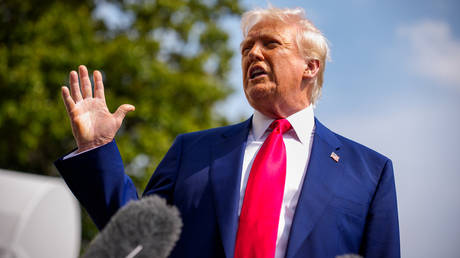 Trump rejects criticism over being gifted a Qatari jet
Trump rejects criticism over being gifted a Qatari jet
Al-Thani also refuted concerns voiced by some Republicans that Qatar may seek to influence the US administration.
”Qatar has always been there for the US when it’s needed,” he said, pointing to counterterrorism collaboration between the two states. Qatari help with evacuation during the US withdrawal from Afghanistan in 2021, and mediated hostage releases involving US citizens in Gaza.
Trump argued that the jet is a “gift from a Nation” to the US government, not to him personally. “Only a FOOL would not accept this,” he claimed.
The White House’s current fleet of Boeing 747-200 jets, which have been in service since the early 1990s, has faced ongoing technical issues. A contract for two new Air Force One planes based on the 747-8 has been plagued by delays and rising costs, pushing delivery from the original 2024 target to as late as 2027 or 2028.
READ MORE: Saudis use burgers to impress Trump (VIDEO)
Al-Thani’s comments came as Trump visited Qatar on Wednesday and Thursday as part of his tour of the Middle East. During the visit, the White House announced an economic exchange agreement between the two countries worth $1.2 trillion, which included a ‘historic’ Boeing deal for up to 210 jets.
The gifting of the jet was expected to be confirmed during Trump’s visit to Doha. However, the President has departed, and no official announcement has been made so far.
-
Site: Zero HedgeFoot Locker Shares Erupt On Possible $2.4 Billion Dick's Sporting DealTyler Durden Thu, 05/15/2025 - 08:05
Foot Locker shares erupted in premarket trading Thursday after The Wall Street Journal reported that Dick's Sporting Goods has agreed to acquire the struggling sneaker retailer for $2.4 billion, offering $24 per share in cash or stock—a nearly 90% premium to Foot Locker's pre-announcement price. Shareholders will have the option to receive either cash or 0.1168 shares of Dick's common stock for each Foot Locker share they own.
Dick's is the nation's largest sports retailing chain and operates Golf Galaxy stores across the US. The acquisition of the sneaker chain would allow Dick's to expand globally in 26 countries.
Number of Foot Locker stores worldwide as of financial year 2023, by store type (via Statista)
WSJ noted, "Dick's said it expects to operate Foot Locker as a stand-alone business unit within its portfolio and maintain the Foot Locker brands."
The move also parallels broader retail consolidation, following Skechers' recent $9.4 billion sale to 3G Capital, a private equity firm with a history in the consumer-goods sector, earlier this month.
News of the acquisition comes as both Dick's and Foot Locker have been pressured by tariff-related retail headwinds, particularly in the sneaker space.
Foot Locker shares plunged 41% this year due to weak sales forecasts and pressure from Nike's pricing changes but surged 84% in premarket trading in New York to around $23.70.
Foot Locker's float is 14.6% short - or about 13.6 million shares. Rough day ahead of the bears.
Shares of Dick's in premarket is down 9%. On the year, shares are down 8.4% (as of Wednesday's close). The deal is the largest ever for the sporting goods retailer and aligns with Lauren Hobart's strategy to grow consumer engagement.
Here's the first take from Wall Street analysts (courtesy of Bloomberg):
Bloomberg Intelligence analyst Lindsay Dutch
-
Foot Locker is in the midst of a challenging turnaround, and may need a buyout from Dick's Sporting Goods
-
"For Dick's, the potential $2 billion deal might strengthen its leading position in the $140 billion market at a discounted multiple of 0.3x price to sales, yet also increases reliance on Nike's assortment"
Morgan Stanley analyst Simeon Gutman
-
"Greater scale and EPS accretion are potential positives, offset by a premium for a struggling chain"
-
The initial reaction to the stocks may be tentative as sources of value creation not as obvious
Truist Securities analyst Joseph Civello
-
A potential deal can create value for Dick's over the long term
-
"FL's business has been under meaningful pressure over the past few years and we think a potential turnaround would likely be a long/ bumpy process"
Jefferies analyst Corey Tarlowe
-
A deal makes sense given Dick's and Foot Locker's category overlap and Foot Locker's "recent diversification efforts"
-
At $24/share it's a potentially positive offer for the Foot Locker stock
. . .
-
-
Site: OnePeterFive
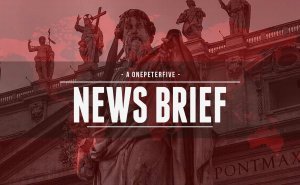
Pope Leo addressed the Jubilee of Eastern Churches yesterday with these words: The address first quoted Francis, but also John Paul II and several times Leo XIII. His Twitter account even posted about it: After this part of the address he rightly condemned the wars which bring great suffering to our Eastern brethren and all peoples. He encouraged the Eastern brethren to remain…
-
Site: RT - News
Kirill Dmitriev has praised the White House for bringing Russians and Ukrainians to the table in Istanbul
US President Donald Trump and his team have “made the impossible possible” by bringing Moscow and Kiev to the cusp of their first direct negotiations since 2022, Russian President Vladimir Putin’s investment envoy, Kirill Dmitriev, has said.
Dmitriev complemented Washington’s mediation efforts ahead of much anticipated talks in Istanbul on Thursday.
The meeting is set to happen “against all odds/fierce resistance,” he said on X, adding that if “not derailed last-minute, this could be a historic step to peace.”
Dmitriev specifically named US Vice President J.D. Vance, Trump’s special envoy Steve Witkoff and Secretary of State Marco Rubio as major contributors to the mediation effort.
READ MORE: Western firms quietly returning to Russia – Putin aide
Putin suggested Thursday as the day direct engagement between Russia and Ukraine could happen in a televised address last Sunday. Moscow has indicated that negotiations could continue from where they left off in 2022, when Kiev pulled out and tried to score a victory on the battlefield with Western military assistance. The U-turn came after then British Prime Minister Boris Johnson told Kiev to discard a draft peace treaty, which had been pre-agreed in Istanbul.
At the moment of writing, there was no certainty that a new round of negotiations would commence as expected. Ukraine’s Vladimir Zelensky, who is currently in the country to meet Turkish President Recep Erdogan, said the Ukrainian government had yet to make a final decision on how to proceed.
Zelensky announced his intention to go to Türkiye in response to Putin’s proposal, claiming that the Russian leader must reciprocate to prove his seriousness. Zelensky and leaders of European NATO nations supporting him have threatened to impose new sanctions on Russia unless Moscow agrees to a 30-day unconditional ceasefire – an idea that Russian officials have called a ruse to give Kiev time to regroup. The initial deadline on Monday has been postponed until the end of the week, pending the outcome of talks.
While Moscow has stated that it will seek a path towards lasting peace in Istanbul, which it says will require addressing the root causes of the conflict, Kiev has been vague about its goals. Some media reports have suggested that the Ukrainian delegation will focus on the proposed ceasefire first. Previously, Kiev insisted that no direct talks could happen without a truce.
-
Site: Novus Motus LiturgicusEven though it was called by a different name, the Ambrosian Rite originally had a feast which was the equivalent of the Byzantine Mid-Pentecost, which I wrote about yesterday, borrowed from that tradition. This article is mostly a translation of notes about it by Nicola de’ Grandi. In the Ambrosian Rite, the Wednesday between the third and fourth weeks after Easter was a feast known as “In Gregory DiPippohttp://www.blogger.com/profile/13295638279418781125noreply@blogger.com0
-
Site: RT - News
MP Riccardo Magi was dragged out of a session for wearing a white sheet with cut-out eyeholes
An Italian opposition MP was dragged out of a parliamentary session on Wednesday for dressing up as a ghost and condemning what he said are attempts to stifle democratic participation.
In a video shared online, Riccardo Magi, a member of the +Europa party, could be seen wearing a white sheet with cut-out eyeholes and the word ‘Referendum’ written on the fabric. During the session, he shouted from his seat to protest what his party claims are government efforts to discourage voter turnout for several national referendums scheduled for next month. The votes are set to cover issues such as Italy’s citizenship requirements for foreigners and repeal certain labor reform provisions.
Magi’s demonstration was cut short after Lorenzo Fontana, the speaker of the Chamber of Deputies, ordered the MP to be escorted out of the session. Parliamentary ushers, together with five security personnel, could then be seen dragging Magi out of the chamber.
Possono trascinare il fantasma del Referendum via dall’aula ma non ci fermeranno nel tentare di informare gli italiani.
— Riccardo Magi (@riccardomagi) May 14, 2025
Chiediamo solo che il Presidente del Consiglio informi i cittadini sul voto referendario. Non le stiamo chiedendo un favore, è un suo preciso dovere.
L’8 e 9… pic.twitter.com/xEKCgpUnsbAfter the incident, Magi uploaded a video of his demonstration on X, writing that “they can drag the ghost of the Referendum away from the chamber but they will not stop us from trying to inform the Italians.”
READ MORE: Media freedom deteriorating in EU – report
“We only ask that the Prime Minister inform citizens about the referendum vote. We are not asking you for a favor, it is your precise duty,” he said, calling on citizens to vote on June 8 and 9 “without fear.”
-
Site: Zero HedgeGermany Wind Power Firms Face Millions In Losses As Wind Speed Drops To 50-Year LowTyler Durden Thu, 05/15/2025 - 07:20
By ReMix News
In many ways, Germany’s wind power revolution has been a success, with wind power serving as the country’s largest source of electricity. However, the current wind lull over the last three months has led to an extreme dip in energy production, which is costing firms millions in losses.
The wind speed average has dropped below less than 5.5 meters per second in the first quarter of 2025, according to German Meteorological Service (DWD). The last time the country saw such low speeds was in 1972 and 1973, and before that, in 1963.
Wind energy producers have been hit hard. For example, PNE, a wind farm operator in Coxhaven, showed revenue dropped to €27.9 million from €31.4 million the previous year, but perhaps more importantly, it went from an operating profit of €1.1 million in the first quarter to a loss of €7.1 million, according to Welt.
The company indicated that there was 31 percent less electricity generated nationwide in the first quarter of the year than in the same period last year, according to data from the German Energy and Water Industry Association (BDEW).
However, it should be noted that April 2024 and 2022 saw much higher wind speeds than previous years, so comparing 2024 to 2025 makes this drop look even more extreme. Experts say there is no evidence of climate change being at work, noting that previous decades have had similar lulls in wind speed.
Germany experienced so-called “dark lulls” over the winter, featuring little sunlight and low wind speed, which led to extremely high prices. Germany imported energy from neighboring countries and turned to conventional power plants in response.
Former Economic Minister Robert Habeck of the Greens had already planned to provide incentives to build 40 large gas-fired plants by 2030 to deal with fluctuations in wind and solar energy. These gas plants had a number of climate protections allegedly built in, such as being able to be switched to hydrogen at some point in the future.
The grid is also at risk due to renewable energy in some instances, especially during holidays when there is less power demand. Solar power cannot be regulated by grid operators, which means that when there is too much electricity and not enough sources that need it, the grid is pushed to its limit. The previous German government, at the urging of grid operators, implemented the PV Peak Act to deal with surplus solar power production.
The average share of solar power energy in 2023 was 31.5 percent, with coal-fired plants in second, at 22.5 percent.
Renewables make up an increasingly large share of Germany’s energy profile, which supporters say reduces reliance on foreign countries such as Russia while also reducing carbon emissions. Critics, on the other hand, say wind power has harmed energy security and also presents a number of environmental risks to wildlife and even forests.
However, it is not just countries like Germany turning to renewables. Conservative governments, including Hungary’s, are also increasingly shifting to wind and especially solar, where it is one of Europe’s leaders.
-
Site: RT - News
Ben Cohen disrupted a Senate hearing, shouting that the US Congress facilitates the delivery of bombs that kill Palestinian children
The millionaire co-founder of the iconic Ben & Jerry’s ice-cream brand, Ben Cohen, was among seven individuals arrested on Wednesday after disrupting a US Senate hearing to protest Washington’s policy on Israel’s military actions in Gaza.
Cohen was detained during testimony by US Health Secretary Robert F. Kennedy Jr. As he was being led away by police, the entrepreneur was heard shouting “Congress kills poor kids in Gaza by buying bombs and pays for it by kicking kids off Medicaid in the US,” and “Congress and the senators need to ease the siege – they need to let food into Gaza!”
The co-founder of Ben & Jerry’s, which has an estimated annual revenue of $300 million, was forcibly removed from the hearing along with six others. They were charged with the misdemeanor offense of “crowding, obstructing, and incommoding” – a law that prohibits demonstrations inside congressional buildings.
Cohen and his Ben & Jerry’s co-founder, Jerry Greenfield, are known for their activism, including criticism of Israel’s actions in Gaza and the occupied West Bank.
https://x.com/YoBenCohen/status/1922760476439515310“I told Congress they’re killing poor kids in Gaza by buying bombs, and they’re paying for it by kicking poor kids off Medicaid in the US. This was the authorities’ response,” Cohen posted on X after his release from custody.
The US is Israel’s largest arms supplier, providing more than two-thirds of the Jewish state’s weapons imports. The US spent $17.9 billion on military aid to Israel between October 2023 and October 2024, according to the Costs of War Project at Brown University.
READ MORE: US speeds up arms supplies to Israel
Since President Donald Trump took office in January, his administration has reportedly approved nearly $12 billion in major military sales to West Jerusalem.
In February, Washington signed off on the sale of over $7.4 billion in bombs, missiles, and related equipment to Israel, which has employed US-made weapons with devastating impact during the conflict in Gaza. The Pentagon announced the additional sale of bombs, demolition kits, and other weaponry to Israel in March worth $3 billion.
Israel launched its military campaign in Gaza following a deadly incursion by Palestinian militant group Hamas on October 7, 2023, which left more than 1,100 people dead and more than 200 taken hostage. The heavy aerial and artillery pounding of the densely populated Palestinian enclave, coupled with an Israeli ground operation, have since claimed the lives of over 60,000 people, with many more injured or missing, Palestinian authorities have estimated.
-
Site: Mises InstituteFollowing World War II, Congress imposed mandates on the Federal Reserve in the areas of employment, inflation, and interest rates. Not surprisingly, the Fed has failed in all three areas. It is time to recognize failure and abolish the Fed altogether.
-
Site: southern orders
Earthly signs of the Kingdom of Heaven after the passion, death and resurrection of Christ the King:
-
Site: Zero HedgeHarvard Tops America's Largest University Endowments (For Now)Tyler Durden Thu, 05/15/2025 - 06:55
University endowments held more than $870 billion in assets last year, largely dominated by America’s elite institutions.
While Harvard, Yale, and Stanford have amassed tens of billions in assets, the median endowment stands at $243 million across 658 institutions.
Overall, endowment assets increased by 4% in 2024 driven by donations and investment returns.
This graphic, via Visual Capitalist's Dorothy Neufeld, shows the largest university endowments in America, based on data from the NACUBO via College Transitions.
Harvard Leads Nationally
As the largest university endowment worldwide, Harvard boasts a number of wealthy donors including Michael Bloomberg and hedge fund billionaire John Paulson.
After the Trump administration froze billions in grants and funding, it raised $1.1 million across more than 4,000 online donations in the first two days after stating it would push back against their demands. Overall, the fund holds $52 billion in assets, as shown in the table below:
As we can see, the University of Texas System is the only public university endowment ranking in the top five.
In fact, UT Austin is among the few universities that has invested in Bitcoin, along with Stanford and Brown. While endowments typically avoid riskier investments, they are increasingly allocating funds into cryptocurrency thanks to regulatory factors.
Overall, a number of elite institutions have the largest endowments nationally, including Stanford (#4) and Princeton (#5).
How Do University Endowments Spend Their Assets?
While university’s hold significant endowment funds, much of the assets are designated for a specific purpose, such as scholarships.
At the same time, these assets are often invested in illiquid assets such as real estate and hedge funds. As a result, it can be damaging to sell these at a loss if universities face a funding shortfall.
Below, we show how $30 billion in endowment funds were spent during fiscal year 2024:
Overall, nearly half of spending went toward student financial aid, with some of the largest endowments such as Stanford and Harvard covering 100% of students financial aid requests.
Academic research was the second-highest category, at 18%, followed by endowed faculty positions, at 11%. Specifically, these positions are funded by endowment donations over a number of years. Finally, facilities operation and management accounted for the smallest share, at 7% overall, covering renovations and building repairs.
To learn more about this topic from a global perspective, check out this graphic on the top universities outside of America.
-
Site: Zero HedgeUK Farmers Fear For Bioethanol Market Following US Trade DealTyler Durden Thu, 05/15/2025 - 06:30
-
A recent trade deal between the UK and the US has led to the removal of tariffs on American bioethanol, which British farmers fear will undermine their domestic market.
-
Concerns exist among beef farmers that the deal will result in increased American beef imports, leading to unfair competition and impacting their livelihoods.
-
The trade agreement has sparked widespread scepticism among British farmers regarding the government’s commitment to protecting their interests and the future of the agricultural sector.
Ministers and commentators heralded the UK’s trade deal with the United States as a political coup that will save thousands of jobs at British automakers. But changes to beef and bioethanol trade rules have left an already bruised agricultural sector fearing the worst, writes Ali Lyon.
When he’s not slavishly editing clips for the hundreds of thousands of people that subscribe to his Youtube channel, Olly Harrison has the not insignificant job of running 1,500 acres of farmland.
But as his impressively regular feed of videos illustrates, tending to that land – and trying to eke out a semblance of profit from it – has become a difficult, bordering on impossible task, as headwind after headwind hit his arable holding near Liverpool.
“It’s been rubbish,” he tells City AM, still dealing with the aftermath of what was England’s driest April on record.
“We’ve had extremes of weather, which has been very wet or – like now – very dry.”
Added to recent years’ inhospitable climes, are the input costs for producing the wheat his family has grown for five generations. They have, he says, remained at the elevated prices sparked by Russia’s invasion of Ukraine. At the same time, the price he is able to secure for his end product has fallen by as much as 40 per cent since those 2022 supply-constraint-induced highs.
But it is another, more recent, external shock that has Harrison especially worried. One that, while niche and esoteric, could kibosh the safety net he and his fellow British arable farmers have traditionally fallen back on when the wholesale wheat price drops too low.
Bioethanol: The little-known safety net of arable farmers
“The bioethanol market in the UK – for wheat – is quite big,” Harrison says.
“It’s basically the floor in the market.”
Opening up the UK and US’s agricultural markets to more trade was a key football in the frenzied negotiations that helped the Starmer administration become the first country in the world to secure a trade deal with America since 2 April’s ‘Liberation Day’.
And to spur the States’ capricious President into bringing down painful tariffs on Britain’s export industries like automakers and plane parts, the government agreed to lower its own levies on a selection of American agriculture products; namely beef and the fuel.
The beef tariffs were reduced only on imports that subscribed to the UK’s world-leading food standards, leading some in the farming community to breathe a partial sigh of relief. But the bioethanol concessions – which saw the UK’s 19 per cent tariff abolished completely – contained no such caveats to protect our sizeable domestic industry. That decision has already sparked warnings from key figures involved in domestic bioethanol production that their sector could be facing extinction.
“Bioethanol, for me, is the watch area,” Tom Bradshaw, president of the National Farmers’ Union (NFU) tells City AM.
“I have been speaking to the bioethanol manufacturing sector… and we think [these changes] probably make it unviable.”
The prognosis from Bradshaw – whose assiduous campaigning around the recent inheritance tax reforms has already made him a regular thorn in the government’s side – was echoed by the UK’s two largest bioethanol producers over the weekend.
The chief executive of London-listed AB Foods’ sugar division, Paul Kenward, and Grand Pearson, the chairman of Ensus, both warned in a joint intervention their “strategically essential sector” was under an “existential threat”.
All of which has left Harrison worried about what it will do to demand for his product. “If they can now bring it [ethanol] in from the States – using wheat that’s grown a lot cheaper than we can because they get a lot more support off their government, using technologies that we can’t, from farms that have got scale that we haven’t – then that’s seriously undermining a sector that’s already on its knees,” he says.
A hollowed out bioethanol sector also poses the risk of some unsavoury knock-on effects for livestock farmers, the very area of agriculture that the government sought to protect during its negotiations.
Because just as Unilever sources its ingredients for Marmite from breweries – and the byproducts produced in the fermenting process – bioethanol producers sell one of their own high-protein outputs as feed for cows.
As Bradshaw summarises: “If they’re not making bioethanol, we won’t get that animal feed.”
Yet more farmer beef
The feed supply issue is just one of several fears that Joe Seels, a Yorkshire-based beef farmer, has for his livelihood as the dust settles on the trade deal.
The NFU’s Bradshaw went to lengths to praise the government for maintaining standards in the face of US pressure. But for Seels, who documented his attendance at the string of protests in London around the changes to inheritance tax on his own Youtube channel, the deal represents yet another example of British agriculture being the fall industry to fix problems elsewhere in the economy.
His primary concern is that there will now be a glut of beef supply in the UK, without the same opportunities to export to the US. Because while the deal ostensibly brings down barriers to trade both ways – both countries agreed to accept 13,000 metric tonnes of beef imports each other each year tariff free – Seels can’t imagine a world in which American food producers buy British.
“I’m really sceptical that it will open up new export avenues,” he says.
“Being American is eating American beef, they won’t accept ours which will be at a premium to [the hormone-aided beef] in their market.”
While the challenging trade environment in the US will persist, British farmers, he adds, will now face stiff competition from the low-cost American beef that will now be available at home.
Consumers and supermarkets are likely to continue to prefer domestically produced beef. Despite other large beef producing nations having access to the UK market, shoppers overwhelmingly prefer meat produced domestically or in Ireland. Senior figures in retail believe that the ubiquity and salience of farm labelling – from the ‘red tractor’ signifier of food standards to the regular sight of union-jack adorned packaging – mean shoppers are unlikely to find American meat in supermarket aisles.
Where Seels and Bradshaw imagine the influx of American beef will be felt, however, is catering and hospitality, where choice is constricted and labelling is less prominent.
“They [the US] have got less red tape, fewer planning restrictions, and their farming operations are just on a huge scale, which all leads to being able to create a product that’s much cheaper,” says Seels.
“We won’t see that on shelves,” he adds, “but where this beef might have a market is food services.”
Ministers have been at pains to trumpet the deal’s positive impact on livestock farmers, many of whom have long feared the spectre of chlorinated chicken and hormone beef being a concession in wider UK-US trade talks. But years of feeling let down by successive governments, mean farmers remain fearful of what the future holds.
“I have no faith whatsoever that the government will protect our interests in future negotiations,” says Harrison.
"They’re just giving us another kick every time, and not realising how vulnerable the farming sector is.”
That scepticism is shared by Seels, who like Harrison is also a popular farming video blogger and has previous in using his channels to vent at political decision making.
“This government has said things to us in the past that it wasn’t going to do then it’s turned around and changed its mind,” he says.
If it does so again, ministers can expect the vitriolic response comprising more than just a few fiercely worded Youtube videos.
-
-
Site: RT - News
President Donald Trump is open to any framework that brings peace between Kiev and Moscow, the secretary of state has said
US President Donald Trump is prepared to accept any mechanism that leads to peace between Russia and Ukraine, according to Secretary of State Marco Rubio. His statement comes as delegations from Kiev and Moscow are expected to meet in Istanbul on Thursday for their first direct talks since 2022.
Speaking at a gathering of NATO foreign ministers in the Turkish resort city of Antalya on Thursday, Rubio said, “We are open to being constructive and helpful in any way we can to end the conflict.”
“We’ll see what happens over the next couple of days, but we want to see progress made in that regard,” Rubio said. “I will say this and I’ll repeat it: there is no military solution to the Russia-Ukraine conflict. This war is going to end not through a military solution but through a diplomatic one.”
Negotiations were proposed last week by Russian President Vladimir Putin, who offered to resume a direct dialogue between Moscow and Kiev without any preconditions to reach a lasting resolution to the conflict.
Ukraine’s Vladimir Zelensky had said he was ready to engage in talks, but insisted on an unconditional 30-day ceasefire first – a demand Moscow has repeatedly rejected. Zelensky also said he would engage in the talks in Istanbul only if Putin attends in person.
Read more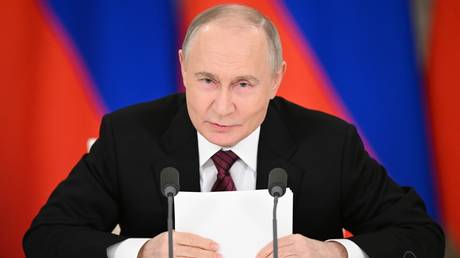 Kremlin rules out Putin appearance at Ukraine peace talks
Kremlin rules out Putin appearance at Ukraine peace talks
However, the Russian leader’s proposal was backed by US President Donald Trump, who urged Kiev to “immediately” accept it. Following Trump’s comments, Kiev seemingly shifted its position.
On Wednesday, the Russian president announced that the country’s delegation would be led by presidential aide Vladimir Medinsky, who played the same role during previous negotiations with Kiev in 2022. Deputy Foreign Minister Mikhail Galuzin, Deputy Defense Minister Aleksandr Fomin and the head of Russia’s military intelligence, Igor Kostyukov are also set to participate.
The US president said he could potentially alter ongoing travel plans in the Middle East. “If something happened, I’d go on Friday if it was appropriate,” he told journalists in Qatar on Thursday morning.
Trump reiterated his wish to end the Ukraine conflict and expressed hope “that Russia and Ukraine are able to do something, because it has to stop.”
-
Site: Real Investment Advice
Rising inflation can chip away at the value of your money and investments, making it one of the most persistent threats to long-term wealth. As prices increase and purchasing power declines, investors must be proactive in adjusting their strategies to protect their portfolios.
If you’re looking to safeguard your wealth in a high-inflation environment, now is the time to consider investments that are positioned to outpace inflation and preserve your future financial security.
Understanding Inflation’s Impact on Investments
Inflation decreases the value of money over time, which means the same dollar buys less than it did before. For investors, this erosion affects real returns—the actual buying power of your investment gains after adjusting for inflation.
Traditional low-yield investments like savings accounts and some bonds may no longer keep up with inflation, leading to a net loss in purchasing power. To stay ahead, investors must rethink their approach and pivot toward inflation-resilient strategies.
Inflation-Proof Investment Strategies
Certain asset classes tend to perform better when inflation is high. Diversifying into these areas can help protect your portfolio and maintain its value over time.
Treasury Inflation-Protected Securities (TIPS)
TIPS are U.S. government bonds specifically designed to hedge against inflation. Unlike traditional bonds, the principal of TIPS increases with the Consumer Price Index (CPI). This means your investment grows in step with inflation, offering both income and preservation of purchasing power.
Commodities and Real Assets
Commodities such as gold, oil, and agricultural products often rise in value during inflationary periods. Investing in commodities, either directly or through mutual funds or ETFs, can help balance your portfolio.
Real assets like real estate and infrastructure projects also tend to appreciate with inflation. Real estate investment trusts (REITs) provide a more accessible way to invest in this sector while also offering the potential for income.
Dividend-Paying Stocks
Companies that consistently pay and increase dividends often indicate financial strength and resilience. Dividend-paying stocks can help generate reliable income and may keep pace with or exceed inflation over time.
Sectors such as consumer staples, utilities, and healthcare tend to maintain demand even during economic uncertainty, making them good candidates for inflation-sensitive investing.
Adjusting Asset Allocation in a High-Inflation Market
To stay ahead of inflation, investors should revisit their asset allocation. A portfolio heavily weighted in cash or low-yield bonds could be vulnerable to erosion in purchasing power. Instead, consider:
- Reducing exposure to long-duration bonds
- Increasing allocations to equities with pricing power
- Incorporating inflation-hedged assets like TIPS or commodities
- Maintaining diversification to reduce overall risk
By taking a balanced approach and revisiting your investment mix, you can better align your portfolio with today’s economic realities.
Work With an Advisor to Build Your Strategy
Inflation isn't a temporary inconvenience—it can have long-term effects on your wealth if not properly addressed. That’s why it’s essential to have a strategy tailored to your goals, timeline, and risk tolerance.
RIA Advisors offers personalized guidance to help you develop an inflation-proof investment strategy. We’ll help you adjust your asset allocation, explore inflation-resilient investments, and stay on track—no matter how the market shifts.
Contact RIA Advisors today to schedule your consultation and build a financial plan that adapts and endures.
FAQs
What are the best investments during high inflation?
TIPS, dividend-paying stocks, commodities, and real assets like real estate are generally strong choices in high-inflation periods.
How do dividend stocks help with inflation?
They provide a consistent income stream and may grow over time, helping to offset the eroding effects of inflation on purchasing power.
Should I adjust my portfolio during inflation?
Yes. It’s often wise to reduce low-yield assets and increase holdings in inflation-resistant investments while staying diversified.
Is cash a safe option during inflation?
Cash offers stability, but it typically loses value in real terms during high inflation. Keeping too much in cash can be a long-term risk.
Can a financial advisor help me protect against inflation?
Absolutely. An advisor can help assess your exposure, adjust your strategy, and identify investments that align with your long-term goals.
The post The Best Investment Strategies for a High-Inflation Environment appeared first on RIA.
-
Site: Real Investment Advice
Below our Market Trading Update, we share analysis from the Atlanta Fed showing that housing affordability has been at its worst in the last twenty years. This is unsurprising given that potential homebuyers face the highest mortgage rates in 20+ years. Moreover, they must contend with inflated house prices and little housing supply. The news for potential homebuyers is even grimmer when looking at the graph below, courtesy of the Financial Times. Over the last ten years, the average size of existing and new home sales has shrunk by about 10%. So not only are homebuyers, in aggregate, committing almost half of their income to buy homes, but they are getting 10% less than they would have a few years ago.
So, this begs the question: Why is the average square footage of homes for sale declining?
- Affordability: Given the affordability problem, some homeowners are forced to buy smaller houses to cut costs.
- Developers Face Inflation: New home builders are trying to minimize construction costs to keep prices more affordable. Inflation in construction goods has made this a necessity for lower-income housing buildings.
- Demographics: A growing number of single or childless couples want to buy homes. Further, the outsized baby boomer generation is starting to retire and wants smaller homes.

What To Watch Today
Earnings

Economy

Market Trading Update
Yesterday, we noted that buybacks, negative sentiment, and positioning support the recent market rally. However, with markets back to short-term overbought on both a relative strength and momentum basis, where are your entry points on a pullback? We can use trend, support, and retracement levels to define entry points to add equity exposure. However, these levels can also help us determine when the pullback becomes a failed "bear market" rally and lower lows are likely.
As shown, the market has recovered most of its April losses. While it is not uncommon for a market to bottom and rally immediately back to all-time highs, there is a reasonable expectation that the market will take a "pause" before resuming its push higher. As we have discussed over the past few weeks, the market rally has taken out previous levels of resistance at the 50, 100, and 200 DMA, along with those that previously served as support levels during the decline. Therefore, using that same analysis, any "pause" in the advance should find buyers at the following levels.
- The conjunction of the 100 and 200-DMA was also the top of the initial March rally. If the market holds that level and consolidates to work off the overbought conditions, it would provide a decent launch pad for a move from 5900 to 6000.
- A failure at those levels, which would not be surprising, would find initial support at the 23.6% retracement level, followed immediately by the 20 and 50-DMA just below. It is worth noting that the 20-DMA has crossed above the 50-DMA, providing additional support to the market during any pullback. Notably, any pullback to this level of support should have the markets back to decently oversold levels, providing a good entry point to add exposure to equity risk.
- However, a failure at those levels will suggest that the current rally was indeed a "bear market rally" and a more profound decline is forthcoming. Just below the 50-DMA average are the 50% and 61.8% retracement levels. The market should find buyers at those levels, and we would look for the market to start trying to find a bottom. However, the 78.6% retracement level, which coincides with the mid-April pullback, will likely be the absolute bottom. But once we start delving into these levels, something else has gone wrong, so we will deal with that issue if it presents itself.

While there is little reason to be bearish currently, especially with buybacks in full swing as noted yesterday, that does not mean that the market will not have pullbacks along the way. The only thing we want to be aware of regarding risk management is navigating a pullback that allows us to increase risk, versus understanding when "the best laid plans have gone wrong."
Don't be overly complacent. There is still an elevated level of risk to the market.

The Atlanta Fed Housing Affordability Index
The Atlanta Fed’s Home Ownership Affordability Monitor (HOAM) Index calculates how affordable housing is based on the median-income household trying to purchase a median-priced home. It compares household incomes to the costs of homeownership, including the mortgage payment, taxes, insurance, and private mortgage insurance. To put the number in context, the Atlanta Fed deems that homes, in aggregate, are unaffordable if the total costs exceed 30 percent of median household income. The index is centered around 100. Thus, an index value below 100 is unaffordable. Conversely, values above 100 indicate affordability.
The first graph below shows that the housing affordability index is at its lowest in 25 years. The second graph shows that it currently takes 46% of median income for homebuyers to purchase a median-priced home.


Recent HOAM data signals persistent affordability challenges. As of August 2024, the national index showed a year-over-year affordability decline of 3.6 percent, milder than the 7.5 percent average drop over the prior year, but still reflecting strain from elevated home prices and mortgage rates. The qualifying income to afford a median-priced home reached $119,640, 40.3 percent above the median household income of $85,255, highlighting a significant affordability gap.
The Wealth Effect Is Not Always Virtuous
Bernanke boasted that by fortifying liquidity in the financial markets via QE and lower Fed Funds, the Fed boosted stock returns and thus greased the wheels of the “virtuous circle.”
Since then, periods of easy monetary policy have correlated well with positive stock market returns. While that relationship is noteworthy, we must also consider the other side of the coin. When the Fed is not providing ample liquidity to the financial markets and stock returns are negative, there must be an adverse wealth effect. Simply, the wheels of Bernanke’s virtuous circle get stuck in the mud.
Accordingly, given the recent market volatility and the possibility of an adverse wealth effect, it’s worth quantifying the relationship between stock returns and economic activity.

Tweet of the Day

“Want to achieve better long-term success in managing your portfolio? Here are our 15-trading rules for managing market risks.”
Please subscribe to the daily commentary to receive these updates every morning before the opening bell.
If you found this blog useful, please send it to someone else, share it on social media, or contact us to set up a meeting.
The post Homebuyers Are Paying More For Less appeared first on RIA.
-
Site: Crisis Magazine

In a recent post on her Substack newsletter, Sarah Cain made a statement that, although predictable and already common in such difficult times, always gives us pause for thought: “Pope Francis was the biggest impediment to my conversion. I know that I’m not alone in that.” Clearly, Cain is not the only one who has had to overcome such a difficulty. Terrible problems and doubts have confronted all…
-
Site: Crisis Magazine

In another example of the culture co-opting and distorting something holy, DEI has become a popular acronym for Diversity, Equity, and Inclusion. And it’s no coincidence when we say this movement is not of God, for the Latin Dei means just that: of God. Even if the people who coined the acronym and push the agenda it stands for did not intend to co-opt the name of God, Satan is surely at work and…
-
Site: AsiaNews.itThe breakdown in relations with Europe was portrayed by Russian propaganda as a bright new horizon for the Eurasian space. But sanctions have enabled Kazakhstan, Kyrgyzstan and Uzbekistan to grow in their role as intermediaries in trade with third countries. And today, many migrants are looking more to the West than to Moscow.
-
Site: AsiaNews.itToday's news: Dozens dead after two days of Israeli bombing in the Gaza Strip. Indonesia plans to send 'unruly adults' for military training. The Philippines and Germany sign a defence cooperation agreement. Military operation in the Indian state of Manipur against suspected militants from Myanmar. APEC warns of the risks tariffs pose to economic growth.
-
Site: Mises InstituteIsn’t it funny how, with the possible exception of Vietnam, all of America’s wars have been justified and have been right and good? What are the odds?
-
Site: Mises InstituteAll potentially unpopular cuts will hit only after 2026 or 2028. This is proof Trump was never serious about any real spending cuts. These cuts will never actually happen.
-
Site: RT - News
The US president could change his travel plans on Friday ‘if something happened’
US President Donald Trump is considering a visit to Türkiye on Friday, as Ukraine and Russia are set to resume direct peace negotiations for the first time since 2022.
The US leader, who seeks to facilitate a truce in the Ukraine conflict, said he could alter travel arrangements amid his ongoing Middle East trip. “If something happened, I’d go on Friday if it was appropriate,” he told journalists in Qatar on Thursday morning.
Trump reiterated his wish to end the Ukraine conflict and expressed hope “that Russia and Ukraine are able to do something, because it has to stop.”
Russian President Vladimir Putin proposed last week to restart negotiations that Kiev aborted in April 2022 to pursue a military victory. Ukraine’s Vladimir Zelensky responded by declaring that he will personally go to Türkiye and expects Putin to do the same to prove his intentions.
Read more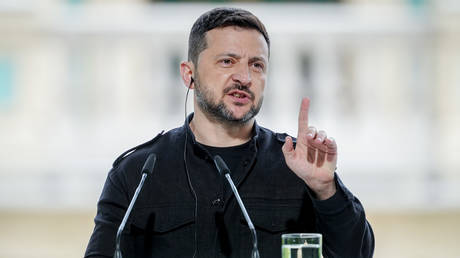 Zelensky claims ban on Russia talks doesn’t apply to him
Zelensky claims ban on Russia talks doesn’t apply to him
Moscow listed the members of its delegation late on Wednesday. It is being led by presidential aide Vladimir Medinsky, who played the role during previous negotiations with Kiev.
When asked by the media whether he was disappointed by the composition, Trump said he didn’t expect Putin to travel to Türkiye as he himself hadn’t made similar public arrangements.
“I said, I don't think he's going to go if I don't go. And that's turned out to be right,” he explained, adding that he has confidence in members of his administration, including Secretary of State Marco Rubio, who would travel to Istanbul on Friday alongside Trump’s special envoy, Steve Witkoff.
The list of Russian officials sent to Istanbul also includes Deputy Foreign Minister Mikhail Galuzin, Deputy Defense Minister Aleksandr Fomin, and Deputy Head of the Russian General Staff Igor Kostyukov, the head of the country's military intelligence.
READ MORE: Trump predicts ‘good news’ from Russia-Ukraine talks
In 2022, Medinsky’s team negotiated a potential peace deal. Its terms offered Kiev Russian security guarantees in exchange for neutrality and restrictions on its standing army. David Arakhamia, who headed the Ukrainian delegation, later revealed following the pre-approval of the draft treaty that then-British Prime Minister Boris Johnson had told Kiev to “just fight,” leading to the continuation of hostilities.
-
Site: Mundabor's blogOne of the most famous poems of the great, great Giacomo Leopardi deals with the sense of elation and serenity that comes after the storm has passed. With consummated art, and with an exquisite sensitivity the more remarkable because of his young age, Leopardi paints a familiar, but extremely vivid picture of village life and […]
-
Site: Mises InstitutePolitical Scientist Joseph Solis-Mullen joins Ryan McMaken to review Ralph Raico's newly published lectures on politics in the West. We recommend this book for all who want a pro-freedom history of political thought.
-
Site: Mises Institute
-
Site: Zero HedgeNetanyahu Charges Macron With 'Despicable' Support For Hamas As Spat DeepensTyler Durden Thu, 05/15/2025 - 02:45
A new Gaza-related spat is now raging between the leaders of France and Israel, amid new reports that famine is hitting the Palestinian population, which is said to be impacting 500,000 people.
French President Emmanuel Macron has called the military policies of Israeli Prime Minister Benjamin Netanyahu "shameful" and "unacceptable" in a fresh interview with a national broadcaster.
"What the government of Benjamin Netanyahu is doing is unacceptable," Macron began in a Gaza segment of the interview. "There is no water, no medicine, the wounded cannot get out, the doctors cannot get in. What he is doing is shameful," he continued.
 Via Associated Press
Via Associated Press
He then interestingly appeared to leverage recent reports saying that Trump-Netanyahu relations have reached a low point, and that the White House is fed up with Bib.
"We need the United States. President Trump has the levers. I have had tough words with Prime Minister Netanyahu. I got angry, but they [Israel] don't depend on us, they depend on American weapons," Macron said.
Macron here seemed to be calling on Washington to essentially put the Netanyahu government in its place, as Trump has sidelined Tel Aviv on everything from the Houthi ceasefire to gaining the freedom of Israeli-American hostage Edan Alexander. And more:
"My job is to do everything I can to make it stop," Macron said, adding that the possibility of revisiting the EU trade cooperation agreements with Israel is on the table.
Never one to back down from a diplomatic war of words, Netanyahu hit back on Wednesday, going so far as to say that Macron stands with Hamas.
"Macron has once again chosen to stand with a murderous terrorist organization and echo its despicable propaganda, accusing Israel of blood libels," a statement from the Israeli prime minister's office said.
"Instead of supporting the Western democratic camp fighting the Islamist terrorist organizations and calling for the release of the hostages, Macron is once again demanding that Israel surrender and reward terrorism," the blistering Netanyahu statement added.
The NY Times has issued an alarming report this week which said "Some Israeli military officials have privately concluded that Palestinians in Gaza face widespread starvation unless aid deliveries are restored within weeks, according to three Israeli defense officials familiar with conditions in the enclave."
The report continued by saying "Israeli military officers who monitor humanitarian conditions in Gaza have warned their commanders in recent days that unless the blockade is lifted quickly, many areas of the enclave will likely run out of enough food to meet minimum daily nutritional needs, according to the defense officials."
Shocking statement from French President Macron: Netanyahu’s blocking of aid to Gaza is shameful. • What is happening in Gaza is an unacceptable and horrific humanitarian tragedy that must be stopped. • Pressure must be put on Israel pic.twitter.com/D4efgGNWAu
— Furkan Gözükara (@GozukaraFurkan) May 13, 2025Currently a US-backed aid plan is being worked on, which is said to be 'independent' amid accusations that Hamas has been stealing and reselling inbound aid. Others have accused Israel of blocking it, in pursuit of a total siege policy.
What's clear is that Netanyahu is increasingly in the political hotseat not just at home, but on the international stage as well - where his closest ally the United States has appeared to grow somewhat cool on the previously enthusiastic support and relationship.
-
Site: Zero HedgeYemen Taught Trump Some Lessons That He'd Do Well To Apply Towards UkraineTyler Durden Thu, 05/15/2025 - 02:00
Authored by Andrew Korybko via substack,
The lessons from Trump’s Yemeni debacle could inform his future decisions on Ukraine...
Five New York Times (NYT) journalists collaborated to produce a detailed report earlier this week about “Why Trump Suddenly Declared Victory Over the Houthi Militia”. It’s worth reading in full if time permits, but the present piece will summarize and analyze its findings. To begin with, CENTCOM chief General Michael Kurilla proposed an eight- to -10-month campaign for degrading the Houthis’ air defenses before carrying out Israeli-like targeted assassinations, but Trump decided on 30 days instead. That’s important.
The US’ top regional military official already knew how numerous the Houthis’ air defenses were and how long it would take to seriously damage them, which shows that the Pentagon already considered Houthi-controlled North Yemen to be a regional power, while Trump wanted to avoid a protracted war. It’s little wonder then that the US failed to establish air superiority during the first month, which is why it lost several MQ-9 Reaper drones by then and exposed one of its aircraft carriers to continued threats.
The $1 billion in munitions that were expended during that period widened preexisting divisions within the administration over whether this bombing campaign was worth the mounting costs. New Chairman of the Joint Chiefs of Staff General John Caine was concerned that this could drain resources away from the Asia-Pacific. Seeing as how the Trump Administration’s grand strategic goal is to “Pivot (back) to Asia” for more muscularly containing China, this viewpoint was likely decisive in Trump’s final calculations.
Oman reportedly provided the “perfect offramp” for him by proposing to his envoy Steve Witkoff, who was visiting them as part of the US’ nuclear talks with Iran, that the US could stop bombing the Houthis while they’ll stop targeting American ships but not ships that they deem helpful to Israel. This draws attention to that country’s outsized diplomatic role in regional affairs, but it also shows that the US was hitherto unsure of how to end its campaign in a face-saving way despite already realizing that it failed.
Two pathways were considered:
-
ramping up operations for another month, carrying out a “freedom of navigation” exercise, and declaring victory if the Houthis didn’t fire on them;
-
or continuing the campaign while strengthening the capacity of local Yemeni allies to start another offensive in the North.
Both were reportedly scrapped in favor of Trump’s sudden victory announcement after another US jet fell off of an aircraft carrier, a US attack killed dozens of migrants in Yemen, and the Houthis hit Ben Gurion Airport.
Five conclusions can be drawn from the NYT’s report.
For starters, Houthi-controlled North Yemen is already a regional power and has been so for some time, the status of which they achieved despite the Gulf coalition’s previous years-long bombing campaign and ongoing partial blockade. This impressive feat speaks to their resilience and the effectiveness of the strategies that they’ve implemented. North Yemen’s mountainous geography indisputably played a role in this, but it wasn’t the sole factor.
The second conclusion is that Trump’s decision to authorize a very time-limited bombing campaign was therefore doomed from the get-go. He either wasn’t fully informed of the fact that North Yemen had already become a regional power, perhaps due to military officials self-censoring for fear of getting fired if they upset him, or he had ulterior motives in having the US bomb them for only a brief time. In any case, there was no way that the Houthis were going to be destroyed in just several months’ time.
Optics are important for every administration, and Trump’s second one prioritizes them more than any other in recent memory, yet the third conclusion is that he still beat a hasty retreat once the strategic risks started spiraling and the costs began piling up instead of doubling down in defiance. This shows that ego- and legacy-related interests don’t always determine his policy formulations. Its relevance is that no one can therefore say for sure that he won’t cut and run from Ukraine if peace talks collapse.
Building upon the above, the Trump Administration’s acceptance of Oman’s unsolicited proposal that led to the “perfect offramp” shows that it’ll listen to proposals from friendly countries for defusing conflicts in which the US has become embroiled, which could apply towards Ukraine. The three Gulf states that Trump is visiting this week have all played roles in either hosting talks or facilitating exchanges between Russia and Ukraine so it’s possible that they’ll share some peace proposals for breaking the impasse.
And finally, the China factor looms over everything that the US does nowadays, ergo one of the reported reasons why Trump suddenly ended his unsuccessful bombing campaign against the Houthis after being informed by his top brass that it was wasting valuable munitions that would be better sent to Asia. Likewise, Trump might be convinced by similar arguments with regard to the strategic costs of defiantly doubling down in support of Ukraine if peace talks collapse, which the Gulf states might convey to him.
Connecting the lessons from Trump’s Yemeni debacle with his ongoing efforts to end the Ukrainian Conflict, it’s possible that he might at first instinctively double down in support of Ukraine if peace talks collapse only to soon thereafter be dissuaded by his top brass and/or friendly countries. Of course, it would be best for him to simply cut his country’s losses now instead of continuing to add to them, but his increasingly emotional posts about Putin hint that he might blame him and overreact if talks collapse.
It's therefore more important than ever that peace-loving countries which have influence with the US immediately share whatever creative diplomatic proposals they might have in mind for breaking the impasse between Russia and Ukraine.
Trump is creeping towards a Yemeni-like debacle in Ukraine, albeit one with potentially nuclear stakes given Russia’s strategic arsenal, but there’s still time to avert it if the “perfect offramp” appears and he’s convinced that accepting it would assist his “Pivot (back) to Asia”.
-
-
Site: Real Jew News
Won’t Back Down
May 14 2025___________________________________
More Vids!
+BN Vids Archive! HERE!
___________________________________
Support The Brother Nathanael Foundation!
Br Nathanael Fnd Is Tax Exempt/EIN 27-2983459

Or Send Your Contribution To:
The Brother Nathanael Foundation, POB 547, Priest River, ID 83856
E-mail: brothernathanaelfoundation([at])yahoo[dot]com
Scroll Down For Comments
-
Site: The Unz ReviewWhat passes for International Justice is a sham, propped up by a vocabulary stripped of its original meaning. If ever there was miscarriage of justice, it was the so-called Nuremberg Tribunal. Though it was essentially a kangaroo court, a shameful charade no different from the sessions held by Judge Roy Bean in 19th-century Texas, it...
-
Site: RT - News
The Islamic Republic has reportedly proposed an alternative to Trump’s demand that it halt uranium enrichment
Iran has proposed setting up a joint nuclear enrichment venture with Arab countries and US investment, The New York Times reported on Tuesday, citing four Iranian officials familiar with the matter.
The plan, reportedly presented by Iranian Foreign Minister Abbas Araghchi during a meeting with American envoy Steve Witkoff in Oman on Sunday, was intended as an alternative to US President Donald Trump’s demand that Tehran completely dismantle its nuclear facilities.
A spokesman for Witkoff, Eddie Vasquez, denied the report, telling the NYT that a joint venture “was never floated or discussed.” The US and Iran have had no formal diplomatic relations since 1980.
Iranian President Masoud Pezeshkian reaffirmed this week that demands for a complete shutdown of the country’s nuclear program were “unacceptable.”
“From our perspective, (uranium) enrichment is something that absolutely must continue, and there’s no room for compromise about that,” Araghchi said earlier this month.
Read more Trump issues nuclear deal threat to Iran
Trump issues nuclear deal threat to Iran
Trump withdrew the US from the 2015 UN-backed nuclear deal during his first term in office, accusing the Islamic Republic of secretly violating the agreement. Tehran has denied any wrongdoing but has since rolled back its own commitments and increased its stockpile of enriched uranium.
Although both sides described the four rounds of Omani-mediated talks as a positive step, tensions remain as the US and Iran continue to clash over the war in Gaza, as well as attacks on international shipping and on Israel by Yemen’s Houthis.
During his Middle East tour on Tuesday, Trump called Iran the “most destructive force” in the region and insisted that it must never be allowed to obtain nuclear weapons.
-
Site: The Unz ReviewIntroductory Note I recently read an old pamphlet titled Facts Are Facts by Benjamin Freedman. I felt intrigued enough to research about the author and found a trove of fascinating history. I wrote about one of the Jew practices he discussed to explain Israeli behavior in Gaza “ceasefire” – the Kol Nidre. The pamphlet itself...
-
Site: AntiWar.comOn May 11, Russian President Vladimir Putin offered to restart direct negotiations with Ukraine in Istanbul. Reuters responded by reminding its readers what happened in the first round of Istanbul talks in the first weeks of the war. The article, entitled “What happened the last time Russia and Ukraine held peace talks?” is a tour … Continue reading "Western Media Continues to Lie About the Ukraine War"
-
Site: AntiWar.comAmong the lesser-known holes in the Constitution cut by the Patriot Act of 2001 was the destruction of the “wall” between federal law enforcement and federal spies. The wall was erected in the Foreign Intelligence Surveillance Act of 1978, which statutorily limited all federal domestic spying to that which was authorized by the Foreign Intelligence … Continue reading "Holes in the Constitution"
-
Site: non veni pacem

-
Site: Zero HedgeAdapt Or Die: Redefining Wargaming For The Age Of Algorithmic WarfareTyler Durden Wed, 05/14/2025 - 23:25
Authored by S.L. Nelson via RealClearWire (emphasis ours),
Commentary
“Adapt or die.” This isn’t just a cliché; it’s a fundamental truth of human survival. Security—the psychological need for stability and protection—is second only to food and water in Maslow’s hierarchy. War directly threatens this security, so understanding war is essential for preserving peace.
One of the oldest tools for grasping the nature of war is wargaming. It is, in essence, a rehearsal—an intellectual simulation that helps leaders make sense of complex, high-stakes decisions before lives and national resources are on the line. But while its utility has persisted, its form has not evolved fast enough to meet the demands of the modern battlefield.
The Problem With Today’s Wargaming
Wargaming is indispensable, but too often, it’s outdated, misused, or misunderstood. In some defense circles, it functions as little more than a stage for confirmation bias, where senior leaders seek validation for preconceived notions rather than insight into novel threats. Worse, wargames frequently remain trapped in analog formats: players huddle around maps, move tokens, make subjective choices, and imagine the rest.
This traditional model assumes that human decisions lie at the heart of conflict. That remains true. But the battlefield is rapidly changing—and the human element is no longer acting alone. As militaries increasingly rely on uncrewed systems, autonomous platforms, and AI-driven operations, our method of simulating war must evolve accordingly.
To prepare for war in 2030, NATO and its allies cannot afford to rely on wargaming methods from 1980. The urgency of modernizing wargaming is not a choice but a necessity for our collective security.
The Rise of Algorithmic Warfare
Consider this: some forecasts suggest that by the 2030s, one-third of militaries could consist of robotic systems. In Ukraine, drone production is trending toward over 2.5 million units annually. This isn’t speculation—it’s already reshaping how war is fought.
In such a world, the idea of a wargame that exclusively simulates human decision-making is dangerously incomplete. Swarms of autonomous drones executing algorithm-driven tactics change not only the character of war but also the speed, scale, and unpredictability of combat. Abstracting these developments away misses the point entirely. A game without machines is a game divorced from reality.
Critically, decision-making itself is changing. While senior leaders continue to anchor their intuition in past experiences, research shows that overconfidence increases in situations involving more chance and ambiguity. Gut instinct, seasoned though it may be, will not suffice when confronted with system-level interactions between thousands of autonomous platforms and sensors.
Technology as a Catalyst, Not a Crutch
The tools to modernize wargaming already exist. Digital environments can now simulate everything from force placement to logistics flows to legal compliance, with users interacting via natural language, voice, or keyboard. This technological advancement offers a beacon of hope for the future of wargaming, allowing commanders to stress-test strategies in real time and track every decision across a replicable digital thread.
This is not science fiction. It is an underused science fact.
Yet many in the defense establishment cling to narrow definitions of wargaming. A leading DoD-affiliated practitioner recently declared, “If the players or sponsors are better equipped at the end of the wargame to do the things they need to do, then there is value. Nothing else matters.” Another dismissed the importance of outcomes altogether, stating that “wargames are about ideas, not facts.”
That’s a dangerous mindset. Strategy may be rooted in ideas, but execution lives in facts. As Churchill famously warned, “However beautiful the strategy, you should occasionally look at the results.”
Toward a New Definition of Wargaming
Commanders’ expectations have evolved, even if the tools haven’t. In 1945, General Eisenhower might have asked his staff for a logistics overlay of the European theater—delivered with pen, paper, and pins. In 2025, General Cavoli might make the same request—but with the expectation of a digital interface offering dynamic updates, AI-enhanced forecasting, and real-time operational feedback.
Unfortunately, EUCOM and NATO commanders still rely too heavily on analog tools. What they need are decision-support systems embedded in the planning process—not adjuncts or afterthoughts.
This calls for a redefinition of wargaming.
A New Definition
Wargaming must be understood not as a parlor game of human strategy but as a rigorous, replicable method of exploring conflict at the strategic, operational, and tactical levels. This includes human decisions and system-level interactions conducted in a synthetic digital environment.
A proposed new definition: “Wargames represent human actions and system-level interactions of conflict or competition in a synthetic environment from the strategic to the tactical level.”
This definition bridges the gap between cognition and computation, people and platforms, gut instinct and algorithmic feedback. It accounts for the growing role of autonomy and artificial intelligence without excluding the indispensable human element.
The Stakes
Wargames must evolve not only because they can but because they must. Definitions matter. The current models fall short of providing leaders with the clarity they need to design force structures that are effective, affordable, and aligned with future threats.
Failure to modernize wargaming risks misinforming critical decisions, wasting resources, and, worst of all, misjudging the very nature of the next fight. The stakes are high, and the battlefield of 2030 will not wait for the analog mind to catch up.
To prepare, we must simulate what war has been and what war is becoming.
-
Site: RT - News
Boris Pistorius says the Bundeswehr needs to boost enlistment amid tensions with Russia
Germany may be forced to revive conscription if not enough people join the army voluntarily, Defense Minister Boris Pistorius has said.
Berlin abolished conscription in 2011 but has recently considered bringing it back, citing “threats” from Russia. According to the broadcaster N-tv, the Social Democrats and Chancellor Friedrich Merz’s Christian Democrats agreed in their coalition deal to introduce the so-called “Swedish model,” which combines selective mandatory and voluntary service.
“We have agreed that we will initially rely on voluntarism – a service that is initially voluntary and intended to encourage young people to serve their country,” Pistorius said in an address to the Bundestag on Wednesday.
“And I say this quite deliberately and honestly: the emphasis is also on ‘initially,’ in case we cannot recruit enough volunteers,” he added.
“In the medium and long term, we will strengthen personnel levels to ensure that the Bundeswehr is sustainably positioned for both homeland security and alliance defense,” the minister said.
Read more Berlin refuses to discuss missile deliveries to Kiev
Berlin refuses to discuss missile deliveries to Kiev
According to Pistorius, applications for military service increased by more than 20% in the first quarter of 2025. Germany plans to raise the number of active soldiers from 180,000 to over 200,000 by 2031.
Enlistment had previously dropped by 7% in 2023, as the Bundeswehr struggled to attract younger recruits, prompting some politicians to describe the recruitment goals as unrealistic.
Although Germany has supplied Ukraine with heavy weapons, including Leopard 2 tanks, Berlin denies that the country is directly involved in the conflict with Russia. Carsten Breuer, Germany’s top general, told Deutsche Welle in March that the country was living in a “grey zone” between full-scale war and complete peace.
During a visit to Lithuania in January, Pistorius claimed that Russia could prepare its army for a “theoretical attack” on NATO in 2029 or 2030.
Moscow has denied any plans to attack NATO member states and accused Berlin of dangerous escalation after Merz voiced support for supplying Kiev with Taurus long-range cruise missiles. Russia argued that the shipment of such sophisticated weapons would make Germany a de facto direct participant in the conflict.

